

THE NEW DIVER’S GUIDE TO SAFER DIVING



3
THE NEW DIVER’S GUIDE TO SAFER DIVING
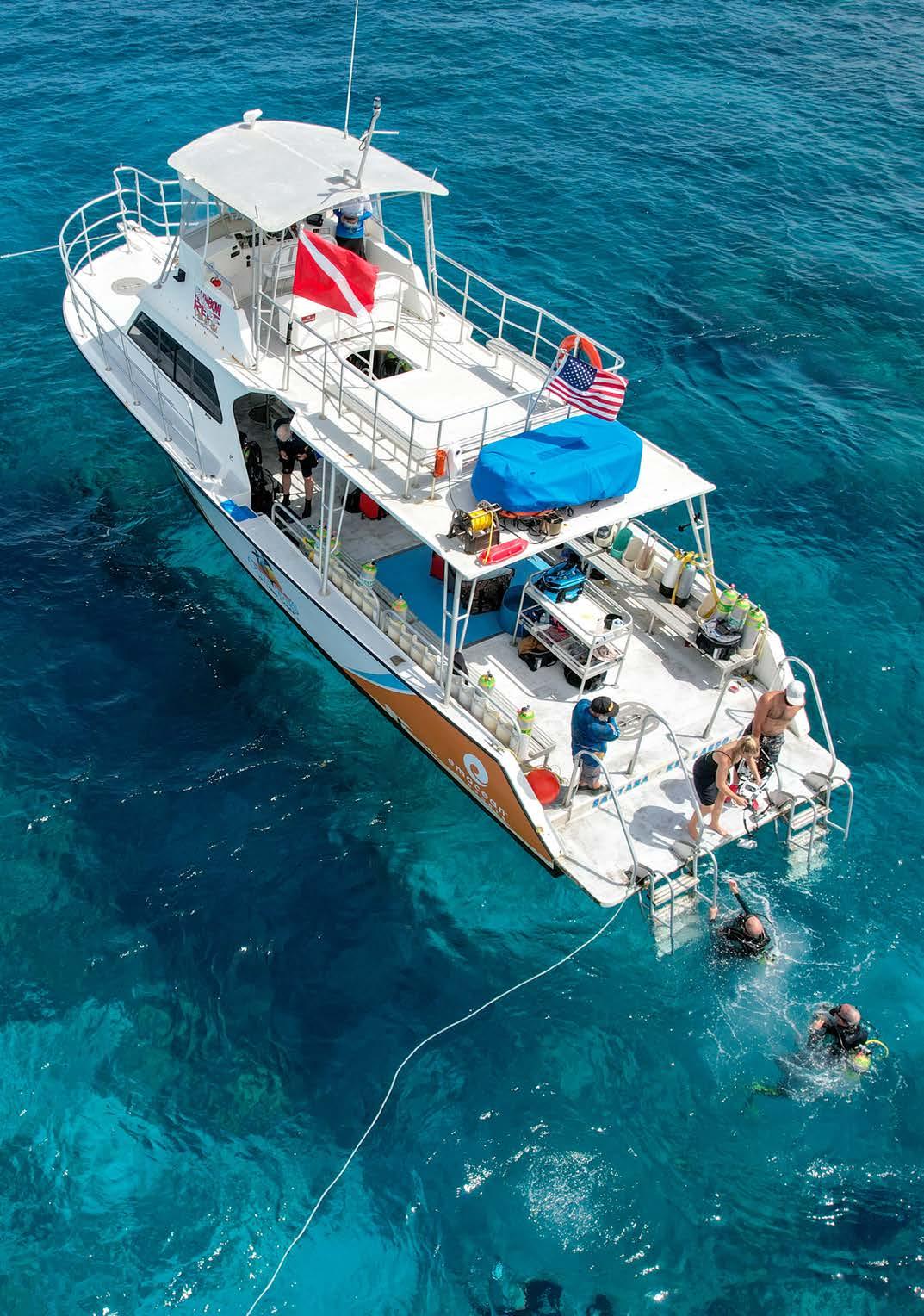
4
MAKE A COMMITMENT TO SAFE DIVING
Whether you’re a newly certified diver or still in training, it’s never too early to commit to being a safe and responsible diver. As you continue to take giant strides in your mastery of diving, consider this guide your stable platform an introduction to key concepts and an ongoing resource to hone your skills. The underwater world is unlike anything you’ve ever encountered. It’s vast and exciting and full of colorful creatures and spectacular scenery. But there’s a lot to learn before embarking on any adventure; it’s our pleasure to guide you through your adventures in diving.
TABLE OF CONTENTS 6 YOUR DIVE EQUIPMENT 14 PLANNING YOUR DIVES 24 DIVING ETIQUETTE 28 UNDERWATER HEALTH 44 DIVE TRAVEL 50 INTRODUCTION TO DAN 61 DIVING GLOSSARY
5
Your gear is your underwater life-support system; it helps you maneuver, protects you from the elements and assists you in emergencies. Your gear must fit well and be suited to the type of diving you intend to do. Most importantly, you should understand your gear and know how to properly assemble, maintain, and use it.
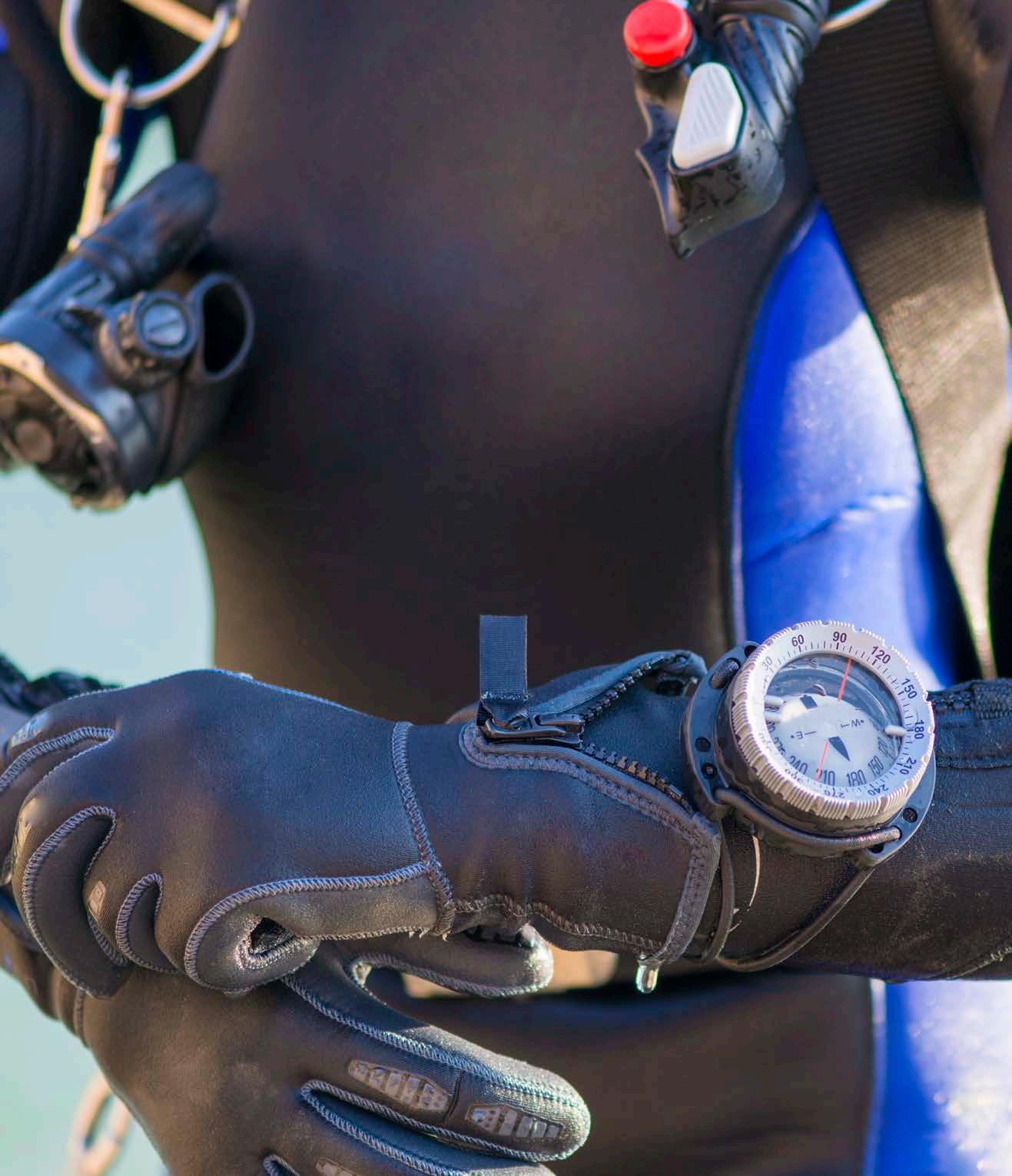
6
BECAUSE YOU RELY ON YOUR GEAR
QUALITY CONSIDERATIONS
The quality of your equipment is important. When buying gear, you should look at performance and maintenance ratings, rather than deciding just on the basis of cost. There are lots of factors to weigh. Are you choosing a very basic pair of fins or a top-of-theline buoyancy compensator (BC), also known as a buoyancy control device (BCD)? Are you interested in warm-water or cold-water diving? Will you stick to recreational diving or do you want to try cave diving?

The type of diving you intend to do dictates what kind of equipment you should buy. Although the basics will likely stay the same, certain elements might vary.
Talk to your instructor; visit your local dive shop; shop around; talk to your dive buddies; and check online resources (including websites and scuba-related chat forums), dive clubs, and local diving sites. Observe what other divers are using and ask why they like it. Who knows? You might make new buddies along the way.
FIT AND COMFORT
Properly fitting gear can aid your underwater performance in many ways. If your gear fits well, it becomes part of your body, not something you have to constantly think about and adjust. Gear that fits you and that meets your needs allows you to focus on more important things like your buoyancy, your buddy, and the amazing marine life around you.
Being familiar with and comfortable in your gear will also improve your peace of mind. In case an emergency does arise, the right equipment will help keep you calm, comfortable, and in control while ill-fitting equipment can introduce additional complexity to a crisis. Try gear on before you use it. Not every shop carries every type of equipment or every brand of gear. But it’s important to make sure that each piece you buy (or rent) meets your needs. Try the gear on and don’t be afraid to ask about brands that a given shop may not carry.
7
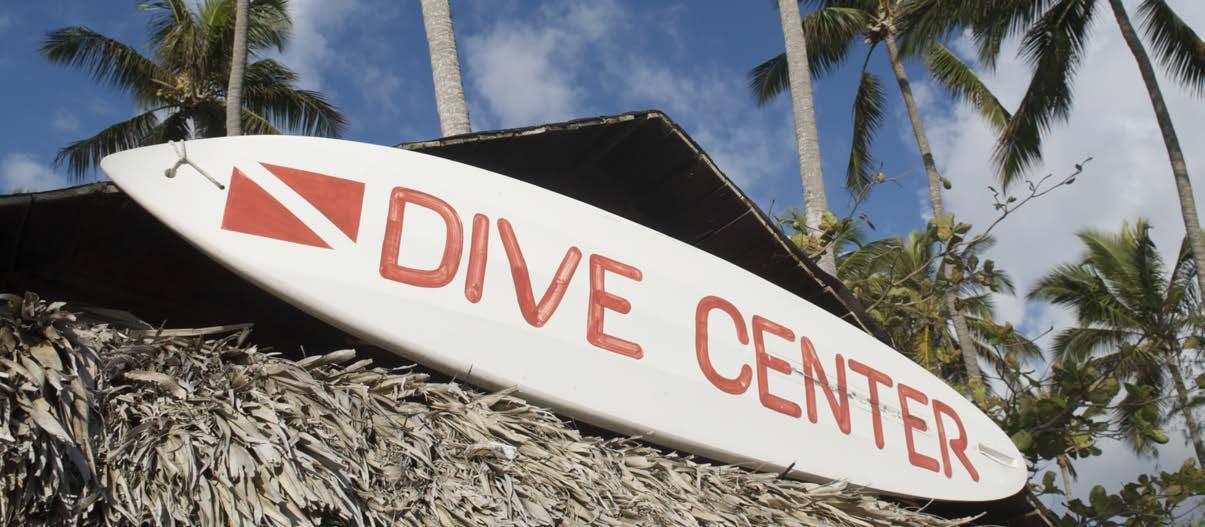


WHEN IT’S BEST TO BUY
Owning your own gear contributes to your safety in several ways. Gear you buy is more apt to fit just right, and you’re more likely to become familiar with how it’s configured and how to use it.
The cost of equipment sometimes keeps novice divers from investing in new gear up front. Generally speaking, the higher an item’s quality, the more it costs. Don’t compromise on safety make sure to invest in the right equipment that will keep you safe underwater. And even if you decide to rent the more expensive gear pieces, there are a few basic items you’ll surely want to own, including a mask, snorkel, and fins.
There are dozens of manufacturers; some specialize in specific types of equipment and some are generalists. Deciding what to buy can be overwhelming. Take your time, discuss your options, and do your homework. Renting until you’re sure what you want is a reasonable way to go.
If you plan to dive close to home several times a year, it may be wise to invest in much of your own equipment. But if you’re likely to dive only a couple of times a year, especially at international destinations, it may not be cost-
effective to buy gear such as weight systems or tanks.
As you continue to dive, you’ll develop your own preferences for which pieces of equipment it makes sense to own. Based on where you dive, how often you dive, and the type of diving you do, you may find that buying more of your gear makes diving more convenient. But most importantly, owning your gear gives you a margin of comfort and safety.
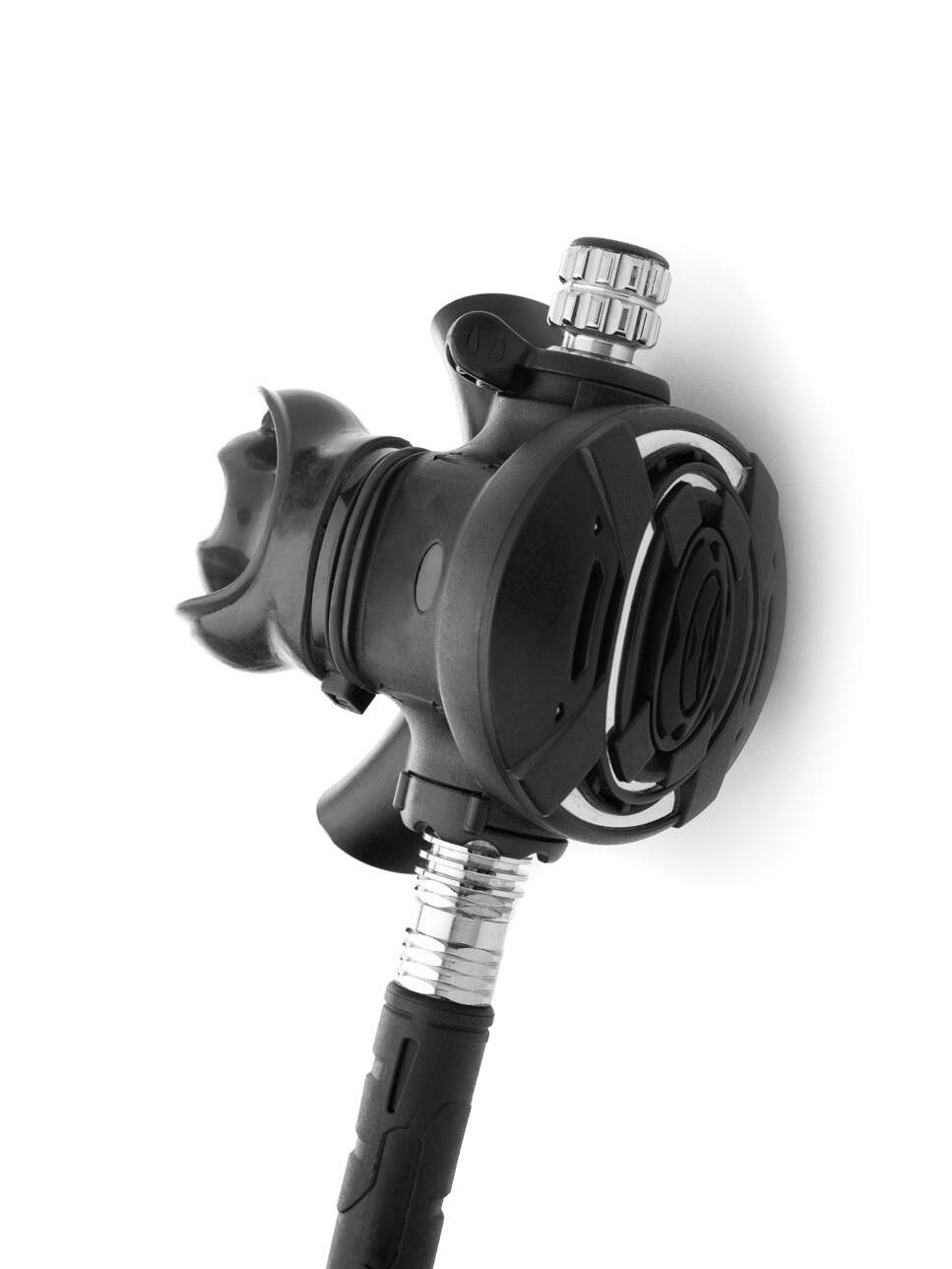
KEEPING YOUR GEAR IN GOOD REPAIR
It’s essential for your safety, perhaps even your life, to inspect your equipment regularly for wear and tear. Different items have different maintenance schedules. Periodic professional servicing is important, but so is routine care, cleaning, and proper storage. For example, you should regularly check straps and buckles for tears or cracks; inspect zippers for broken teeth; examine your drysuit, wetsuit, BC/BCD, and other dive apparel for frayed areas and signs of wear that could lead to leaks; and evaluate your regulator and tank for physical and functional problems.
Taking care of your gear will help it last longer and ensure that it performs as you expect. The chart on the next page outlines
recommended procedures for various kinds of gear.
FACTORS TO CONSIDER IN RENTING
If you’re not ready to purchase all your own gear, renting offers a great way to try different styles and brands of equipment. Renting will give you time to discover your equipment likes and dislikes before you invest in your own. Renting may also be a good idea if you’re planning a trip to a distant dive destination and don’t want to carry all your gear with you; resorts often offer a variety of rental options which may or may not be included in your base fee. However, keep in mind that renting a full kit 10 times costs roughly as much as buying it.
Many dive shops offer a variety of rental options. The quality of rental equipment will differ, so research the dive shop, visit it
9
ITEM(S) BEFORE YOU DIVE AFTER YOU DIVE STORAGE PROFESSIONAL SERVICING
Mask, snorkel and fins
Keep well organized to minimize the risk of their being kicked, stepped on, or tripped over.
BC/BCD Test before you dive.
Rinse and dry well.
Pack and store so they’re not crushed by heavier gear.
Rinse the outside and flush the bladder with fresh water. Hang to dry.
Regulator Test function as soon as you set up your gear.
Wetsuit, boots, gloves, and hood If necessary, lubricate zippers.
Rinse and clean while still connected to cylinder and pressurized. Leave out to dry.
Rinse, turn inside out and hang to dry. If wetsuit has an unpleasant odor, use wetsuit shampoo in postdive rinse.
After drying, partially inflate jacket for storage.
Not applicable
Keep dust cap in place and secured. Store in a regulator bag.
Have professionally inspected annually; remember the low pressure hose and dump valve.
Service at least once a year.
Store in the shade, as neoprene is susceptible to UV damage.
Not applicable
Dive computer Check battery icon. Rinse and dry. Store in a dry, cool, ventilated area. Service every one to two years, or per the manufacturer’s recommendation.
Cylinder
Handle with extreme are, as a pressurized cylinder presents a risk of explosion. Secure tightly for transportation.
Rinse thoroughly and let dry. Regularly remove tank boot to prevent a buildup of salt and debris.
Never drain completely of gas. Reduce pressure to the lowest reading on the pressure gauge. Keep a clean, dry dust cap on cylinder valve.
Make a visual inspection once a year. Perform a hydrostatic test every five years.
10
sure you have booties with thick soles to protect the bottoms of your feet from rocks and shells. Or if you rent a wetsuit for a coldwater dive, remember that a surfing wetsuit won’t provide adequate thermal insulation.
Before each dive, call ahead to make sure the shop will have the equipment you want on the day you need it and reserve it if possible. This will ensure that the shop won’t be out of your size or preferred brand, even if they have to outfit several students for a diving course. Even if you choose to rent gear at your destination, you’ll still want to bring a few items of your own.
ASSEMBLING A “SAVE-A-DIVE” KIT
Virtually every diver will eventually experience the frustration of a snapped buckle, a jammed zipper, a blown O-ring, or a broken strap.
It’s not a matter of if but when you’ll need a backup kit. Every diver can benefit from carrying a basic “savea-dive” kit that includes spare parts, simple tools, and other essentials.
The contents of such kits are not universal and will vary depending on the type of diving you do and the gear you use. The contents of your kit may even change from dive to dive, such as if you decide to try night diving, or travel to a new dive site. Your “save-a-dive” kit can also be as simple or as complex as you choose.
Having a repair kit with you at all times will serve you well, but it’s even better to minimize your need to use it by properly maintaining and servicing your gear and staying mindful of potential hazards. For more ideas on preparing for your next dive, visit DAN.org.
SAVE-A-DIVE
KIT
Light
Clasps
Defogger spray
Duct tape and waterproof adhesive/sealant
Fin buckle/straps
Lighter
Snorkel keeper
Mask strap or extra mask
Multi-tool
O-ring kit

Regulator mouthpiece
Weight belt/buckle

White trash bag
Zip/Cable ties and bungee/shock cord
ITEMS WIDELY AVAILABLE TO RENT ITEMS THAT MAY BE AVAILABLE TO RENT SPECIALTY ITEMS TO CONSIDER RENTING Wetsuits
Cutting
(Suggested items
Batteries
Zipper wax
Drysuits
Gloves, hoods, and booties
Tanks
BCs/BCDs
Regulators
Weights and weight systems
Dive computers
Masks
Snorkels
Fins
Tools
Surface marker buoys
DIVE COMPUTERS
Dive tables and computers are key to helping you manage your decompression risk. If you dive using tables, make sure to bring a depth gauge and watch that you can attach to your BC/BCD. Even if you dive with a divemaster, you should calculate your risk based on your dive profile, not someone else’s.

If you choose to use a dive computer, it’s important that you know how it works. Dive computers are generally easy to travel with, so if you have one you should bring it with you. This will ensure that you have a computer you understand.
If you’ll be renting a computer, plan ahead. Most dive computers available for rent are basic, easyto-use models. But it’s always best to contact the shop or resort beforehand to find out what kind of computers they offer. That will give you time to learn about a device before you dive with it.
12
1
No-Decompression Limit (NDL): The amount of time remaining at the current depth without the need for decompression stops.
FIVE KEY FEATURES OF YOUR DIVE COMPUTER
2
Current Depth: Dive computers dynamically respond to the changes in pressure and allow you to track your depth/time profile more accurately.
3
Dive Time: The display may indicate the amount of time that has passed or the remaining time left in your dive.
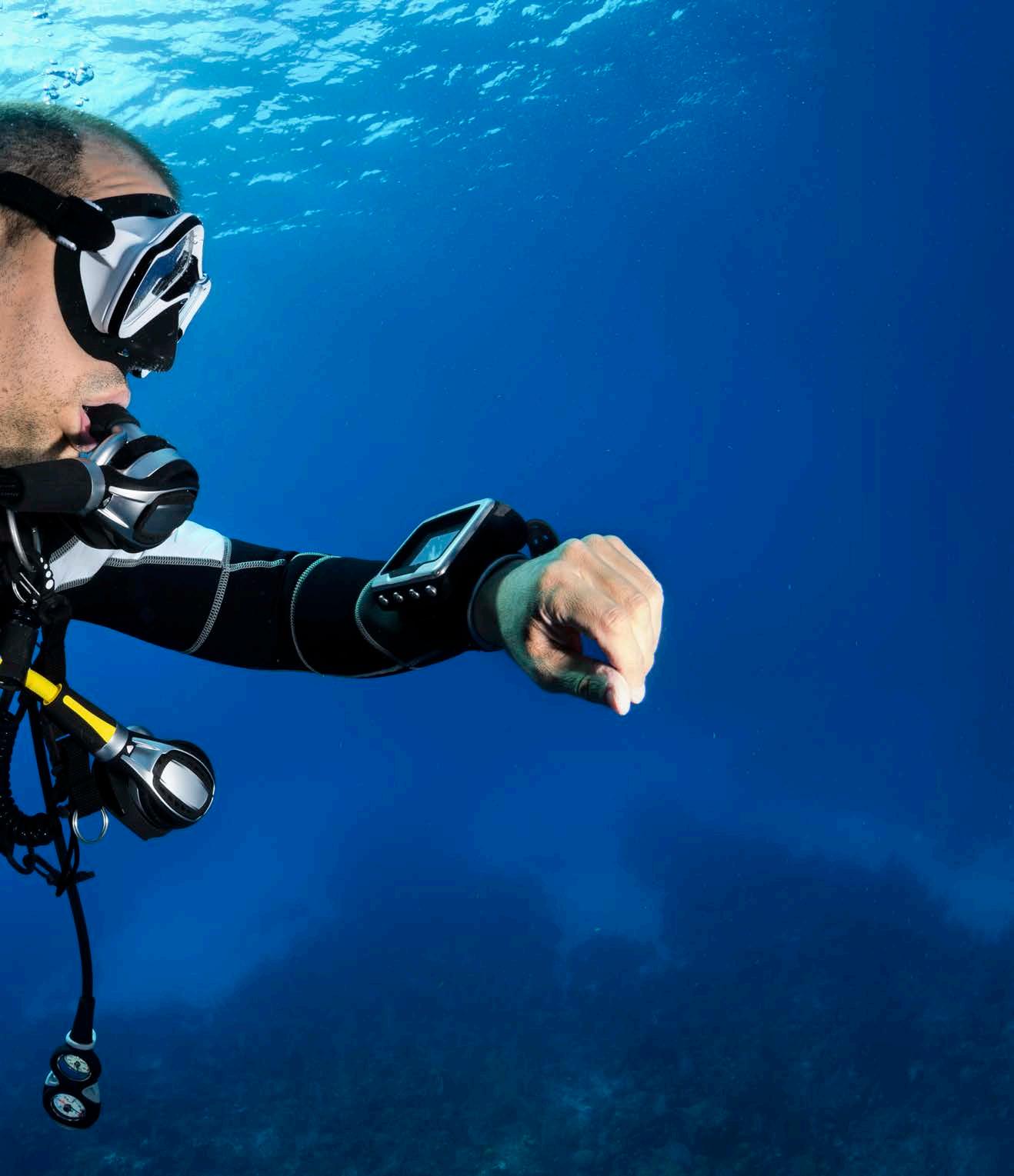
4
Breathing Gas: Risk of DCS is calculated based on the theoretical amount of nitrogen your body absorbs, so make sure what you’re breathing and what your computer thinks you’re breathing are the same.
5
Ascent Rate: The optimal ascent rate allows the body time to safely eliminate absorbed nitrogen. Exceeding a safe ascent rate will signal your computer’s alarm.
13
PLANNING YOUR DIVES ...
Researching your dive site, planning your dive, and preparing to respond to emergencies are all components of prudent dive planning. The safe diver understands that preparation for diving begins long before you arrive at your dive site. The foundation of safe diving is a good emergency action plan (EAP). DAN’s emergency staff answers more than 2,500 calls each year. Not surprisingly, many calls involve situations that could have been managed with a sound EAP.
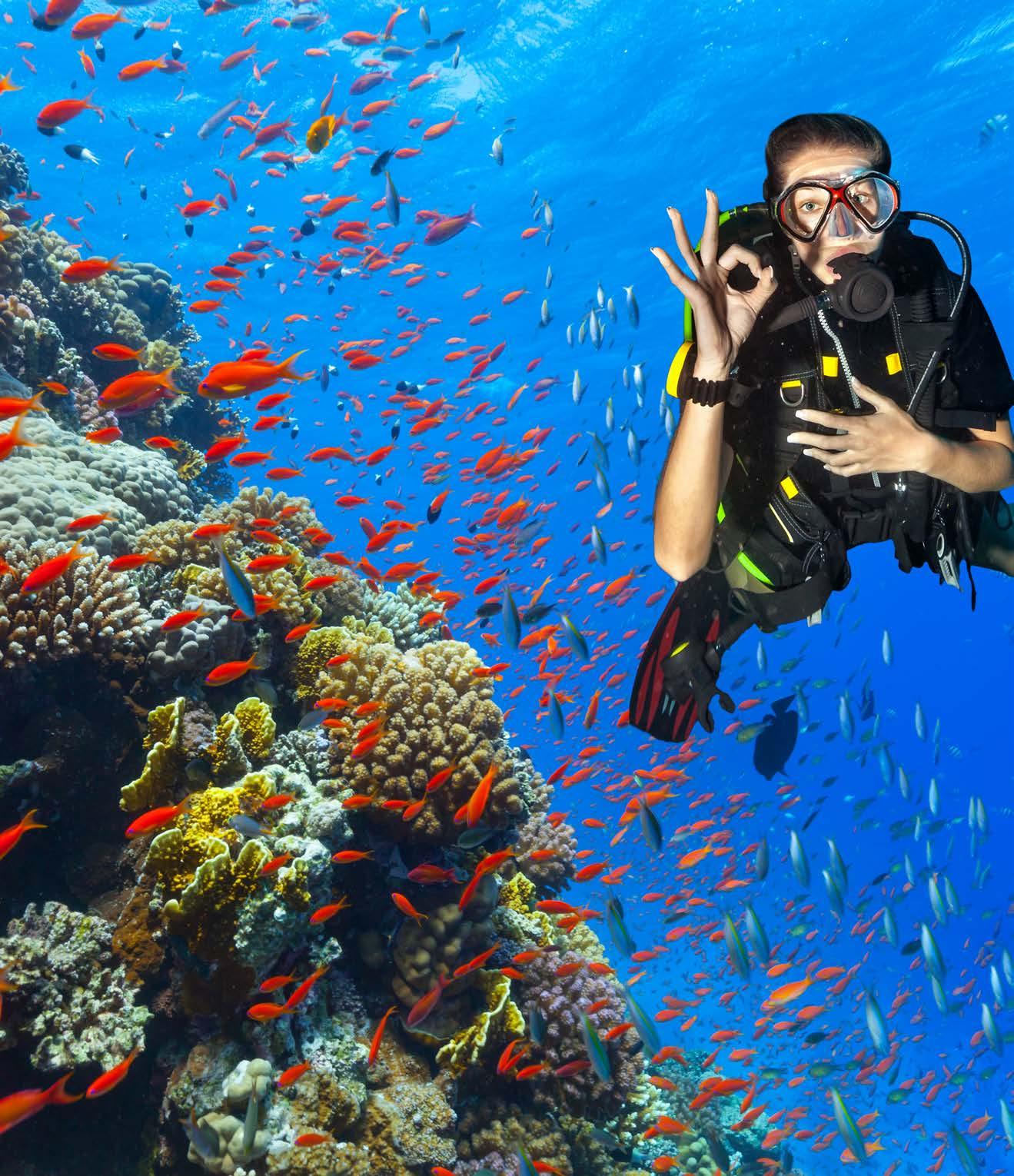
14
BECAUSE PREPARATION BEGINS AT HOME
DEVELOPING AN EMERGENCY ACTION PLAN (EAP)

The heart of an EAP is a list of essential considerations and a framework for performing key functions should an incident occur. Being a responsible member of the diving community means you and your dive buddies should create and review an EAP prior to any dive excursion. A comprehensive EAP can be divided into three sections: prevention, preparation, and response.

15
PREVENTION PREPARATION
Paying attention to the factors that commonly cause dive emergencies can help prevent crises altogether. The best way to handle an incident is to keep it from happening. These are factors to consider:
Physical fitness: Diving requires aerobic fitness, strength, flexibility, and muscular endurance. Your physical fitness should be commensurate with the demands of your dive environment.
Medical fitness: You need to consider both chronic medical conditions and short-term health issues. Congestion increases the risk of ear or sinus barotrauma, and traveling divers often face gastrointestinal problems that can affect their general health and stamina. Be honest with yourself; if you feel less than 100-percent healthy, postpone your dive.
Mental fitness: Many people with everyday anxieties, fears, or other psychological difficulties can dive safely. However, if for
any reason, at any time, you or a buddy feels unprepared to enter the water, call off the dive.
Training: Make sure you’re trained for the type of dive you’re about to do and practice your basic skills, such as mask clearing, buoyancy, and air sharing skills, regularly. Take a refresher if you feel uncomfortable or haven’t been diving in six months or more.
Equipment maintenance: Divers must understand the capabilities and limitations of their own and their buddy’s equipment. Have your gear inspected regularly, get trained in its use and maintenance, and incorporate enough time to familiarize yourself with your buddy’s gear before you dive.
Dive planning: Learn about any hazards, specific skills required, or other unique aspects of your dive site. Consider hazardous marine life, currents, temperature, and the potential for rapid changes in weather or sea conditions.
Despite all efforts to prevent them, incidents still happen. The better prepared you are to handle them, the better the outcome will be.
Here’s how to prepare:
Know the local resources: Make a written list of the facilities and resources near your dive site, including hospitals, clinics, search-and-rescue providers, and transportation or evacuation services. Injured divers should always be taken to the closest medical facility, as not all hyperbaric chambers are equipped to receive injured divers directly. Call DAN only after you’ve contacted local emergency personnel.
Get first-aid training: Make sure your first aid, cardiopulmonary resuscitation (CPR), and oxygenadministration skills are up to date. If you haven’t had a chance to complete such training, make sure to identify who in your group perhaps a divemaster, dive buddy, or medic at the dive site is trained.
WHAT TO DO IN CASE OF EMERGENCY
STEP 1
CALL 911
In life-threatening situations, provide basic life support and arrange for safe transport to the nearest medical facility.
16
Carry emergency supplies: It’s critical to keep your first aid kit well stocked and current. You should also ensure that you have enough oxygen to care for at least one injured diver until medical personnel can arrive. Obviously, remote locations will require more oxygen.
Share information: Tell your buddy about your allergies, medical conditions, and insurance coverage, and whether you’re a DAN member. If you’re uncomfortable sharing personal information, write it down, seal it in an envelope, and let your buddy know where it is. And always let someone on shore know where you are and when to expect you back.
Stay alert: Be an alert diver. Know that even when a diver does everything right, bad things can happen. Don’t be caught off guard when they do. One level head can create calm in the midst of chaos.
RESPOND
An effective response includes both the split-second decisions you make as an incident occurs and the subsequent actions you take. Here’s how to increase the chance of a good outcome:
Know your role: During an emergency, every person should have a preassigned task. Determine who will provide care to the injured, call 911, manage bystanders, secure the equipment, and meet emergency personnel and direct them to the scene. Your plan should account for any divers who may still be in the water.
Communicate: Good coordination among all parties involved in an emergency enhances care and reduces stress. Designate someone to liaise among the caregivers, captain, crew, emergency services personnel, and DAN.
Document: Keeping detailed notes helps caregivers understand trends in an injured diver’s condition, creates a record of what treatments have been administered, and may provide legal protection to all involved parties. And taking photos with your phone can assist in making a diagnosis.
Keep safety in mind: Remember that rescuer and bystander safety come first; don’t forget to wear gloves when rendering first aid and use a barrier device if providing CPR. Key steps to treating an injured diver include any needed basic life support measures such as CPR, bleeding control, and oxygen.
Debrief: Give everyone involved in an emergency the opportunity to discuss what happened. Allow all concerned to describe their own experience and ask each other questions in an environment free from judgment. Formal counseling can ensure psychological well-being and enhance everyone’s ability to respond to future emergencies.
Call the DAN 24/7 Emergency Hotline +1-919-684-9111. collect calls accepted
STEP 3 PROVIDE
Provide your name, location, and phone number to the operator.
STEP 4 DAN MEDICS
You will be connected directly with DAN medical staff.
INFO
STEP 2 CALL DAN
17
PREDIVE PREP
For many divers, part of the appeal of diving is the opportunity to go where others may not have gone before and see incredible underwater marine life others may never see up close. Scuba diving involves an element of danger, and DAN wants to make sure your diving adventures are as safe as possible. A large part of safety is having a contingency plan. If you know what to expect before you get to your dive site, you can make sure you’re prepared with the right gear and a robust EAP.

18
DECIDE WHERE TO GO
Learn as much as possible in advance about any place you plan to dive. Check online for relevant websites, local dive shops, and scuba-related discussion boards. While you may choose to research local attractions, history, or food, make sure you look into the following factors:
Weather: The first thing you should do is check the weather at your dive site, as it can affect your experiences both above and below the surface. Does the location get frequent afternoon storms during the summer? Does the temperature change significantly over the course of a day? And remember that weather on the coast can be dramatically different than just a mile or two inland.
Water: Ask about water conditions at your dive site specifically water temperature and whether you are diving in fresh water or salt water. The water temperature will vary with the season and the

depth of your dive, and water will feel cooler than air of the same temperature because your skin releases heat into water much faster. Be aware of your comfort at different temperatures and get a thicker wetsuit or wear more layers if necessary. Regarding salinity, remember that salt water makes you more buoyant than fresh water, so you may need more weight for an ocean dive.
Currents: Of all the obstacles a diver encounters, currents are among the most underestimated and most physically demanding. Currents can increase the amount of air you use and carry you far from your dive boat,
19
shore entry point, or intended depth and exhaust you. Before a dive, you can refer to National Oceanic and Atmospheric Administration tidal and current charts at tidesandcurrents.noaa. gov. If your research suggests you may face currents, review how to use your signaling device before you get in the water. If you’re suddenly caught in a current and it’s too strong to swim against, don’t fight it. Get positively buoyant, dumping weight if necessary, and inflate your safety sausage as soon as possible. Ride out the current until it subsides, or navigate parallel with the beach until you’re out of the current.
If you have to make a decompression stop during your ascent, inflate your safety sausage from below the surface. By alerting others to your location from underwater, they can track you while you off-gas, relieving you of the choice between getting lost or risking DCS.
Visibility: Weather, currents, time of day, bottom composition, ocean life, and a host of other factors can all influence visibility (often called “viz”). When you ask about a site’s visibility, make sure to check out both “where” and “when.” That is, don’t just look for a place with great viz; also ask what time and depth offers the best underwater views.
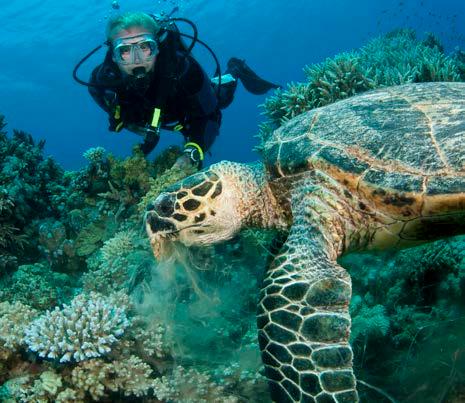

Marine life: You may want to research local marine flora and fauna out of sheer interest, but there are also practical reasons to do so. Knowing what hazardous wildlife you might encounter will help you avoid contact with noxious species, ensure that you have the correct items in your first aid kit, and teach you how to manage injuries should they occur. Also, familiarizing yourself with local marine life will help you learn how to protect the natural habitat. Divers are visitors to the underwater world, and we must learn how to conduct ourselves appropriately when we’re there.

On-site resources: Part of your predive checklist should be ensuring that your dive location has all the necessary emergency and first aid equipment such as emergency communications (good cell phone reception, a marine radio, a satellite phone, etc.), first aid supplies, and emergency oxygen equipment. There’s no need to pack your own oxygen unit if there’s one at your site, but you shouldn’t dive without one available.
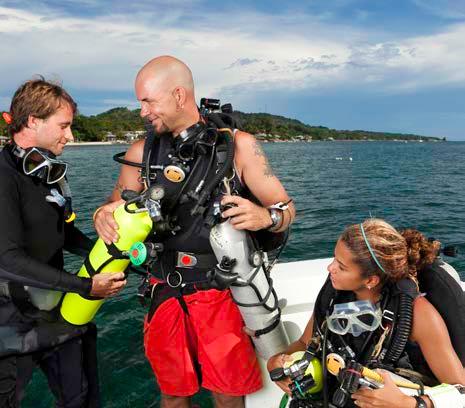
CHOOSE WHAT TO BRING
The following packing checklist is not comprehensive. It’s intended to provide a base so you can customize a list suited to the specifics of your trip. Once you finalize your own checklist, make two copies one for packing to go and one for repacking at the end of your trip. These are the basics you should consider:
ESSENTIALS
Certification card (C-card)
snacks
SPECIALIZED EQUIPMENT (OPTIONAL)
Camera and other photography equipment
Diver propulsion vehicle (DPV)
unit
tool or dive knife
computer
suit
signal
“SAVE-A-DIVE”
FIRST AID KIT BASICS
Nitrile (hypoallergenic) gloves
CPR barrier (oronasal device or face shield)
Tweezers
Safety pins
Scissors
Soap (or antiseptic solution/wipes)
First aid guide
DRESSINGS AND BANDAGES
KIT
Batteries
Clasps
Defogger spray
Duct tape and waterproof adhesive/sealant
Fin buckles and straps
Lighter
Mask strap or extra mask
Multi-tool (including an adjustable wrench and hex key)
O-ring kit (including O-rings for high- and low-pressure hoses, an O-ring pick and silicone grease)
Regulator mouthpiece
Snorkel keeper
Weight belt or buckle
White trash bag (or some white working surface)
Zip ties/cable ties and bungee cord/shock cord
Zipper wax
Dive tables
Adhesive bandages (such as Band-Aids)
Gauze pads and rolls
Triangular bandages
Elastic bandages (such as Ace Bandages)
Medical tape
ACCESSORY ITEMS
Vinegar
Sterile saline solution
Irrigation syringe
Hot and cold packs
Medications
Aspirin
Acetaminophen (such as Tylenol)
Ibuprofen (such as Motrin or Advil)
Diphenhydramine (such as Benadryl)
Hydrocortisone cream
Antibiotic ointment
Dimenhydrinate (such as Dramamine)
Loperamide (such as Imodium)
Antacid (such as Tums)
Hat
Nutritious
Sunscreen
Water
GEAR
BC/BCD
Booties/fins
Cutting
Dive
Exposure
Gear bag
Gloves
Hood
Lights
Mask
Reels
Regulator
Snorkel
Surface
Tank(s)
Weight
Whistle
Oxygen
Rebreather
Speargun
21
PERFORM A FINAL CHECK
When you arrive at your dive site, it’s important to follow a regular predive ritual. Doing so will reduce the likelihood of experiencing an emergency due to equipment problems or other preventable circumstances. As you and your buddies establish a predive ritual, make sure it includes the following elements:
Inventory: Take a formal or informal inventory of the first aid and oxygen equipment at your dive site. Whenever you board a dive boat, take a look at the first aid supplies and emergency oxygen equipment before you depart.
Verbal review: Review your dive plan and contingencies, your hand signals (especially your breathing-gas management signals), and common emergency procedures (such as weight removal, out-of-air management, and buddy separation).
Buddy check: Configure, assemble, and check your own and your buddy’s equipment. While there are several acronyms divers use to jog their memories, one commonly used one is BWRAF (and its associated mnemonic, “burger with relish
and fries”), which helps divers remember what to check before entering the water. This is what the letters stand for:
BC/BCD: Operate all inflation and deflation valves to ensure that your BC/BCD can accept and release air. Test the oral inflator. Operate all dumps to ensure that air can be dumped quickly. Check that straps have no slack and are lying flat.
Weights: Make sure your weights are secure and review all release mechanisms. When you and your buddy check each other’s gear, make sure to familiarize yourselves with each other’s weight system.
Releases: Determine where all your and your buddy’s releases are located, how they come unfastened, and whether they’re properly secured.
Air: Breathe air through your regulators to ensure that it is fresh and dry. Test the operation of your primary and secondary regulators at least three times. Both should allow you to breathe comfortably and shouldn’t free-flow when purged. Be sure the air-pressure gauge doesn’t drop during the breathing test. Check all hoses for damage.
Final okay: Do a final headto-toe check. Ensure that hoses are clipped to the diver neatly and are in the correct configuration. Make sure the diver has fins, a mask, and any other accessories (reels, knife, compass, emergency signaling equipment, etc.) needed for the dive. Correct anything else that appears amiss.
22

23
DIVING ETIQUETTE
Good diving etiquette is important in building and maintaining trust with your diving companions. Your training may have covered basic dos and don’ts, but it never hurts to have a refresher. Whether you’re taking a giant stride off the back of a boat or making a shore entry, here are some tips on appropriate diving behavior and dive-buddy etiquette to make sure you put your best fin forward.

24
BECAUSE DIVING IS A SOCIAL SPORT
GENERAL GUIDELINES
Fortunately, there’s considerable overlap between safe diving and courteous diving. Following these tips will make you both a congenial dive companion and a safer diver:
Know your dive preferences: What’s your dive style? Do you fin fast or slow? Do you want to look around or take pictures? It’s important to be sure you’re comfortable with the dive plan and aren’t pressured into diving outside your limits. You don’t want to put your dive buddy or divemaster in a potentially dangerous situation. Be comfortable openly discussing your goals and limits before a dive so you and your buddy can plan accordingly.
Discuss your dive location: Confer about the choice, but be flexible. Be sure to check weather conditions, currents, etc. If possible, check on local events that may affect travel to the dive site or how busy the dive site will be. If you’re diving off a boat with set destinations, make sure your skill level meets the requirements for the dives. But be aware that the dive professionals or boat captain may change locations after
evaluating the dive site; don’t complain the change may be for safety reasons. Feel free to ask questions politely, however.
Don’t talk during the briefing: The briefing may include information on flora and fauna or the location of emergency supplies. You may feel confident about your skills and believe you don’t need a refresher on how to share air or perform hand signals. However, ignoring the briefing is disrespectful and distracting to other divers who are trying to listen, so you’re potentially putting yourself and others in danger.
Check your breathing gas: If you’re diving with someone else, be clear about how many tanks you need for the dives you are planning to do. Having improperly filled tanks (underfilled or with the wrong breathing mix, for example) or not enough tanks (if your dive location doesn’t have an air fill station) requires altering or canceling dives. Check your

25
DID YOU KNOW?
Wearing too much or too little weight can affect buoyancy and cause divers to work harder to maintain proper trim, increasing gas consumption. Maintaining proper trim and buoyancy control and moving calmly and efficiently will likely improve air consumption.
air pressure when you pick up your tank. If you’re using nitrox, check the percent mixture before you leave the shop.
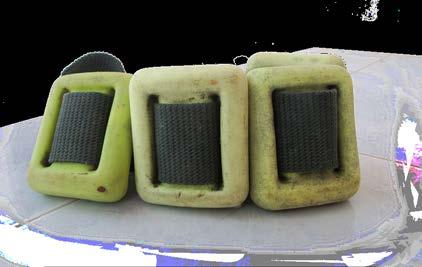
Remember that diving isn’t a competition: It’s important to keep track of your breathing gas consumption, but there’s no value in bragging about it. Divers breathe different volumes of gas for a variety of reasons. Be respectful of other divers’ usage.
Be mindful of your environment: Be aware of your surroundings and respectful of other divers both underwater and on the surface. Dive resorts and dive boats often designate dry areas. Don’t place wet gear in or walk with wet gear into these areas. If other divers are relaxing in a common area, keep your noise level down. Whether you’re diving locally or internationally, be conscious of cultural nuances and respectful of other divers’ physical limits.
Use correct terminology: Like any sport, scuba has its own lingo. For example, you should understand the difference between air, gas, and oxygen in relation to diving. Air is 21% oxygen, 78% nitrogen, and 1% other inert gases, while breathing gas may refer to nitrox, heliox, some other mix, or air. Oxygen is used for decompression at shallow depths and should be used only by divers trained in
decompression diving. Other often-misused terms are “goggles” and “flippers”; goggles are for swimmers and flippers are for dolphins.
Manage your time: Whether you’re shore diving or boat diving, you should show up as scheduled. Give yourself enough time to prepare, dress, and assemble your gear, as you don’t want to feel rushed that can create stress that may affect your performance. Generally, it’s best to be neither the first nor the last one ready. One tip is to watch the instructor or crew, and suit up when they do.
Ask before touching: Whether you’re on a dive boat, at the beach, or at the quarry, don’t touch another diver’s gear without their permission. While it’s certainly appropriate to do so to prevent damage or address a safety hazard, if you’re simply curious about the features or performance of a piece of equipment, just ask. Most divers will be more than happy to “show.and tell.”
26
BUDDY GUIDELINES
Here are a few tips on how to get along well with your fellow divers:
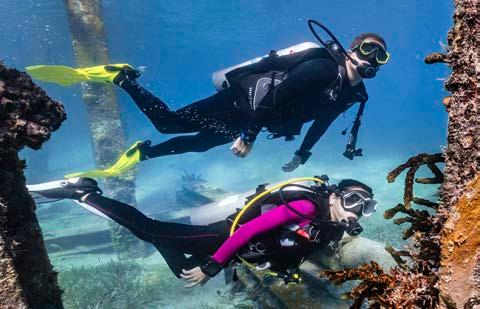

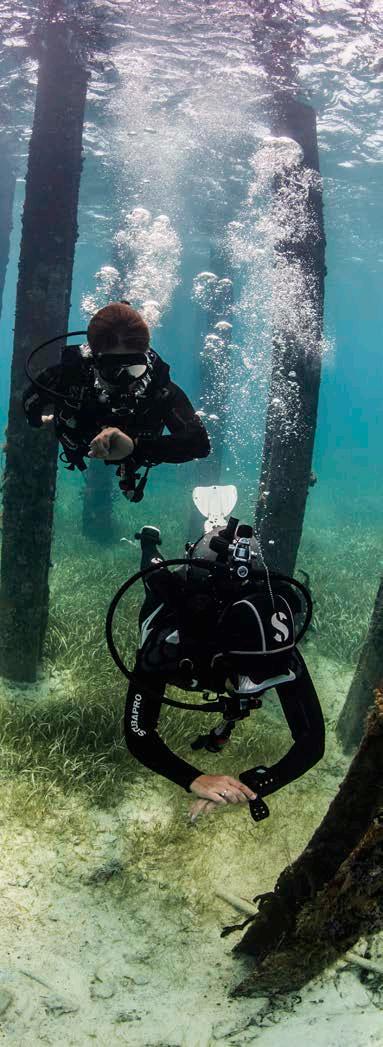
Be a good buddy: Buddy diving is a cooperative system intended to provide divers with a safety buffer. While all divers should be capable of taking care of themselves in and out of the water, the concept behind the buddy system is to have an extra set of eyes to monitor equipment and skills, and an extra set of hands ready to provide support in case of emergencies, such as out-of-air events or entanglements.
Coordinate your communications: Not all divers are trained by the same agency, and not all agencies have the same hand signals. Coordinating communications is part of a good dive plan; for example, review basic hand signals (such as “out of air”) and discuss at what air pressure you intend to turn back. Specify your level of comfort in the water, your goals for the dive, and what side you want to dive on (for ease in locating your buddy). Make sure you and your buddy are open about your limitations, plans for the dive and any potential concerns (such as having a camera).
Let anyone call off a dive: Whether it’s before, during, or near the end of a dive, any diver should feel comfortable calling a dive for any reason. Researching the site, having a clear plan, and communicating your dive style are all important in ensuring safety. This guideline is more rather than less important among buddies who already know each other and have established roles within the relationship, such as parents and children, partners, or siblings.
Be a courteous photographer: Whether you’re in a class or on vacation, be aware that not everyone wants to be on your Facebook or Instagram page. Within reason, ask or warn people before you take pictures. It gives them a chance to opt out, turn away, smile or photobomb your shot!
27
UNDERWATER
The human body aquatic environment to understand how bodily functions. of underwater physiology make informed decisions planning. Proper management will reduce your chance
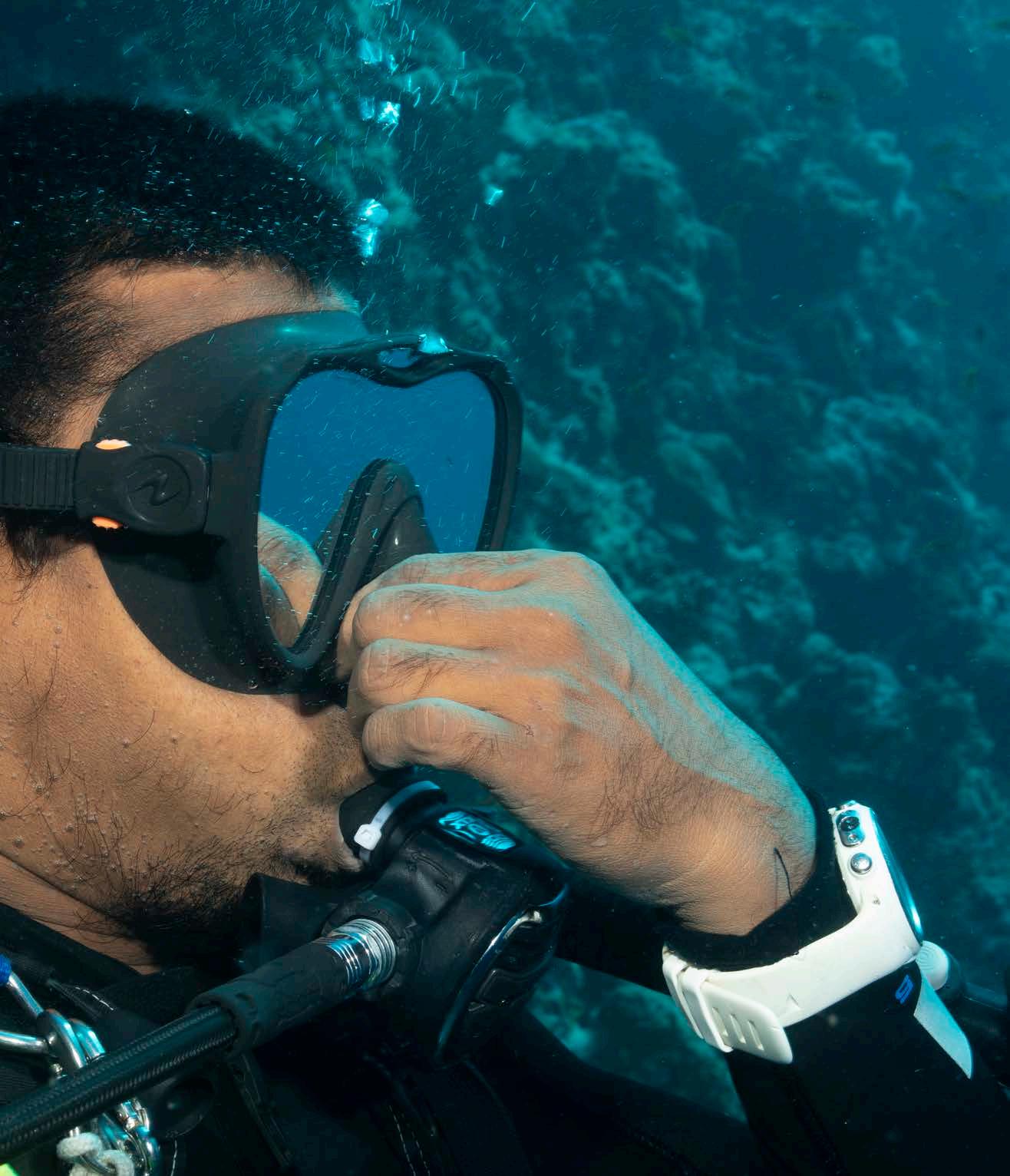
BECAUSE YOUR WELL-BEING IS PARAMOUNT
FITNESS TO DIVE
Your fitness to dive is your individual capacity to safely meet the physical demands of scuba. Calculating fitness to dive requires assessing the environmental conditions at your dive site, the type of dive you plan to make, the equipment you’re using, and your diving experience.
UNDERWATER HEALTH
wasn’t designed for an environment, so it’s important how pressure affects your Learning the fundamentals physiology can help divers decisions during dive dive planning and risk will improve your safety and chance of a serious accident.
Why fitness to dive is important: Though diving is primarily a leisurely recreational sport, it requires a level of fitness that can be achieved only through physical training. Both strength and endurance are needed to ensure that you can manage the range of effort diving can demand. For example, would your physical ability allow you to undertake a long surface swim in a strong or changing current? Would you be able to participate in buddy assistance or even rescue? These are strenuous tasks that require preparation and fitness. All divers are advised to establish regular fitness routines that include strength, cardiorespiratory, and flexibility components.
Evaluating fitness to dive: All dive students complete a medical questionnaire before beginning an open-water course. The physical requirements of the open-water

swim-skills test can serve as a good baseline to assess your endurance, but you should continue to monitor your fitness and get periodic medical evaluations, especially as you age and/or your health changes.
Divers with pre-existing medical conditions face particular challenges. However, many conditions that used to be considered incompatible with safe diving have been re-evaluated. For example, it may be safe for some individuals with certain forms of asthma who have normal lung function tests to dive as long as the condition is properly monitored and appropriate diver support is provided. Many divers with other chronic diseases are allowed to dive but they must make wise choices and abstain from diving in conditions that may test their capacities and provoke unwanted health complications.
29
But if you ever have cause to question your fitness to dive if a dive makes you anxious, for example, or pushes your physical limits or mental readiness reflect on the situation and decide if you need further training. Impartial selfevaluation leads divers to set better personal dive boundaries, manage their risk, and reduce their likelihood of an accident.
Where to learn more: Emphasizing fitness to dive is not aimed at keeping people out of the water but at finding ways they can safely participate in diving. For more information on fitness to dive, visit DAN.org
The remaining sections of this chapter will give you an introduction to the most important health ramifications of diving. There’s a section on your ears because pressure-related ear and sinus trauma is the most-often-reported diving injury. There’s a section on decompression sickness (DCS) because it’s fairly common in its milder forms and can have serious consequences in its more severe forms. There’s a section on your heart because DAN research has shown that a third of all diving fatalities are caused by acute cardiac events. And there’s a section on other conditions that affect enough divers to be of wide interest.
KEEPING YOUR EARS HEALTHY
Whether you’re breathing compressed gas or freediving, changes in ambient pressure (pressure in the environment around you) will affect your ears. The delicate structures responsible for hearing and balance are not designed for the stresses associated with diving. Equalizing your middle-ear pressure is essential to avoid damaging your ears.
Equalization occurs when the pressure in your middle ears matches the ambient pressure. The purpose of pressure-equalizing techniques is to open up your Eustachian tubes (or auditory tubes), which are the ducts connecting the back of your throat (or nasopharynx) to your middle ears, as shown in the diagram below.
ASCENT
( + )Middle-ear pressure
PAIN-FREE
Middle Ear Eustachian Tube (–)Ambient Pressure Open DESCENT ( – )Middle-ear pressure
PAIN CONDITION
Middle Ear Eustachian Tube
Equalization occurs when the pressure in your middle ears matches the ambient pressure.
30
(+) Ambient Pressure Closed + + +
EQUALIZE YOUR EARS TO KEEP THE EUSTACIAN TUBES OPEN
Most divers are able to equalize their middle ears without major difficulty by using one of a variety of techniques from jaw movement to the Valsalva maneuver. Failure to equalize properly during descent or ascent can result in substantial pain and risk of injury. Here are a few problems to be aware of:
Inner-ear barotrauma is a tearing or perforation of the delicate membranes leading to the inner ear. It’s a serious condition that requires medical attention and, frequently, surgical intervention. It can cause damage to the inner-ear hearing structures (the cochlea) and balance structures (the vestibular canals). This can result in either complete or high-frequency hearing loss, vertigo, or tinnitus (ringing in the ears).
Oval Window
Middle-ear barotrauma is the most common pressure-related injury. If the Eustachian tubes are blocked or inflamed (as with the common cold), the ear is unable to equalize, causing the eardrum to stretch to the breaking point. On descent, compression of air causes the eardrum to bow inward, while on ascent, expanding air causes it to flex outward. This can result in pain or vertigo.
Vestibule Ear Ossicles
Semicircular Canals
Outer-ear barotrauma is caused when something blocks the ear canal (such as a too-tight hood, ear wax, or nonvented ear plugs), creating closed air space. During descent, more gas must be added to this space; otherwise, increasing pressure in the surrounding tissues will fill the canal with blood and fluid.
Middle Ear Ear Drum
Round Window
Cochlea
Eustachian Tube
Reverse squeeze, also called block, is a condition in which gas becomes trapped in the middle ear on ascent. It can sometimes be managed by descending slightly and then reattempting a slower ascent. If this fails to work, a diver has little choice but to risk injury while continuing the ascent as slowly as possible given the circumstances. Reverse squeeze can be prevented by avoiding diving while congested.
Alternobaric vertigo arises from unequal pressure in the left and right middle ears, usually because the pressures are equalizing at different rates. Failure to equalize symmetrically can cause the brain to erroneously perceive the difference in pressure as movement. Dizziness and vertigo may occur before the threshold for pain is reached. In severe cases, symptoms may include nystagmus (involuntary rhythmic movement of the eyes), nausea, and vomiting. AV may also be accompanied by a feeling of fullness, tinnitus, and muffled hearing in one or both ears.
31
EQUALIZATION TECHNIQUES
Valsalva maneuver (pinch your nose and blow): This is the method most divers learn. Pinch your nostrils (or close them against your mask skirt) and blow gently through your nose. The resulting overpressure in your throat usually forces air up your Eustachian tubes.
Passive (requires no effort): This typically occurs automatically during an ascent.
Voluntary tubal opening (tense your throat and push your jaw forward): This calls for tensing the muscles of the soft palate (the soft tissue at the back of the roof of your mouth) and the throat while pushing the jaw forward and down as if you’re starting to yawn; your jaw muscles pull your Eustachian tubes open. This requires a lot of practice, but some divers learn to control those muscles and hold their tubes open for continuous equalization.
Toynbee maneuver (pinch your nose and swallow): With your nostrils pinched or blocked against your mask skirt, swallow. This pulls open your Eustachian tubes, while the movement of your tongue, with your nose closed, compresses air against the tubes.
Frenzel maneuver (pinch your nose and make the sound of the letter “K”): Close your nostrils and close the back of your throat as if you’re straining to lift a weight. Then make the sound of the letter “K.” This forces the back of your tongue upward, compressing air against the openings of your Eustachian tubes.
Lowry technique (pinch your nose, blow, and swallow): This is a combination of Valsalva and Toynbee; while closing your nostrils, blow and swallow at the same time.
Edmonds technique (pinch your nose and blow and push your jaw forward): While tensing your throat muscles and soft palate and pushing your jaw forward and down, do a Valsalva maneuver.
IF YOU HAVE TROUBLE EQUALIZING:
Some divers may occasionally have difficulty equalizing, while others may have persistent difficulty. A re-evaluation of your equalization technique may be a good idea if you have a hard time clearing. To avoid difficulty, be aware of and accommodate acute nasal and sinus problems, as they can lead to inflammation of the delicate tissues in your nose, sinuses and ears. And take your time some divers simply
equalize slowly; it’s important not to feel pressured or rush, nor to rush other divers. Equalize early and often. And seek medical evaluation if you experience difficulty equalizing every time you dive.
DAN medics often get asked if decongestant use is appropriate for divers. Decongestants relieve congestion temporarily but can mask ongoing problems. In addition, using decongestants for four or five days may result in what’s called rebound congestion, making it more difficult to equalize. But if your physician okays it, decongestant use may be helpful.
If you’ve pushed your limits, be alert for ear barotrauma symptoms. Fullness in the ear, ear pain, and tinnitus (noise in the ear) after diving are not normal, and if you experience these symptoms you should be checked by a physician. Persistent vertigo after a dive is an emergency, and you need to be evaluated as soon as possible. Barotrauma damage and innerear DCS damage have similar symptoms, but the treatments are very different. Recompression helps in cases of DCS but can worsen barotrauma. For more information, see Ears & Diving at DAN.org/Health.
32
EQUALIZATION TIPS
Listen for the “pop” Before your dive, make sure that when you swallow you hear a “pop” or “click” in both ears. This tells you both Eustachian tubes are open.
Start early Several hours before your dive, begin gently equalizing your ears every so often.

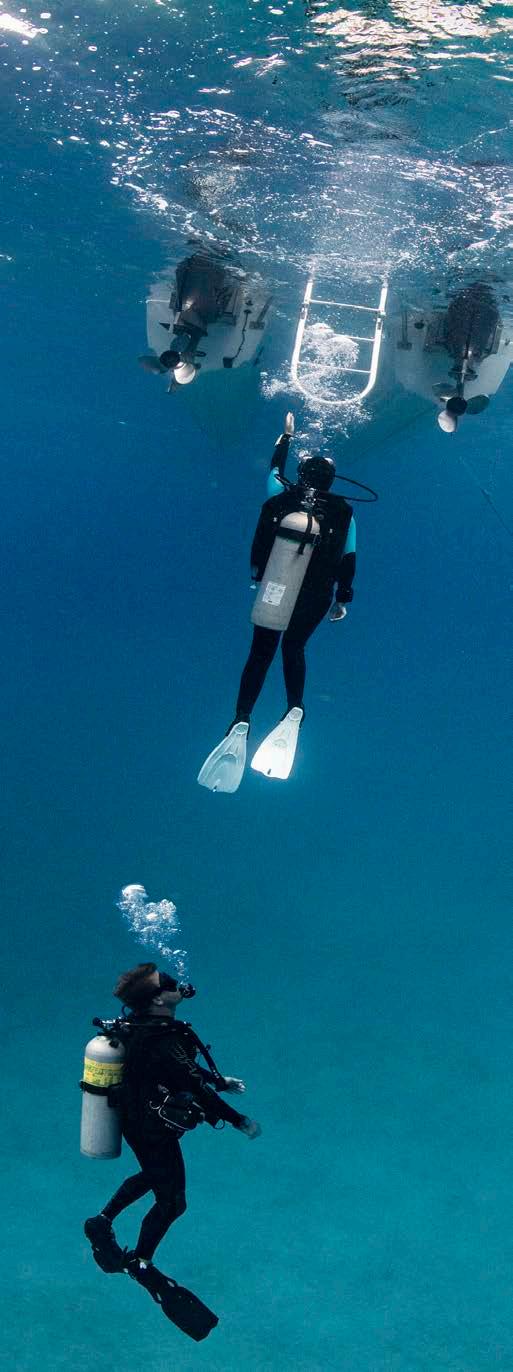
Equalize at the surface “Pre-pressurizing” at the surface helps get you past the critical first few feet of descent. It may also inflate your Eustachian tubes so they are slightly bigger.
Descend feet first Studies have shown a Valsalva maneuver requires 50% more force when you’re in a head-down position than head-up.
Look up Extending your neck tends to open your Eustachian tubes.
Use a descent line Pulling yourself down an anchor or mooring line helps control your descent rate. A line also helps you stop your descent quickly if you feel pressure, before barotrauma has a chance to occur.
Stay ahead Equalize often, trying to maintain a slight positive pressure in your middle ears.
Stop if it hurts Don’t try to push through pain. If your ears begin to hurt, ascend a few feet and try equalizing again.
Avoid tobacco and alcohol Both tobacco smoke and alcohol irritate your mucous membranes, promoting more mucus that can block your Eustachian tubes.
Keep your mask clear Water up your nose can irritate your mucous membranes, which then increase mucous production..
33
UNDERSTANDING DECOMPRESSION SICKNESS
One of the hazards associated with breathing compressed gas underwater is decompression sickness (DCS), also known as “the bends.” It’s important for all divers to know about DCS manifestation and management, risk factors that may predispose them to the condition and preventive steps that can minimize their chances of developing it.
What causes DCS: The increase in ambient pressure during descent causes the body’s tissues to take on more inert gases (such as nitrogen). A controlled ascent allows the nitrogen to move from the tissues and blood to the lungs, where it can be exhaled. DCS can occur when ambient pressure drops faster than the nitrogen is eliminated, leading to gas coming out of solution and forming bubbles. A good analogy is what happens when you take the cap off a bottle of soda and bubbles form. The body can tolerate some gas bubbles, but if they enter sensitive tissues a range of DCS symptoms can occur.
Your dive computer and DCS:
Dive computers have become an important piece of dive gear and a primary means of regulating dive profiles. A dive computer dynamically monitors your depth and time underwater. Yet despite following the instructions provided by their dive computers, divers can still develop DCS. But this
does not make it “undeserved” or “unexplained,” which are both misleading terms.
Dive computers (and tables) are based on mathematical models that measure a dive profile (or pressuretime-ascent exposure) to predict the rate of on- or off-gassing for the average diver for a given breathing gas. Remaining dive time and, if necessary, decompression stops are suggested based on the exposure.
For most divers in normal circumstances this provides reasonable safety. However, factors like hard exercise, cold, or lack of rest the previous night may change your on- and off-gassing or make you more susceptible to decompression sickness. Thus, you have to learn how to make adjustments in such situations. Basic adjustment is to stay at depth less than computer indicates as the acceptable time, pad your safety stop, or use nitrox as a breathing gas, and keep computer settings on air.
Risk factors for DCS: The most significant risk factor is your dive profile, which is determined by your depth, time at depth (pressure), and rate of ascent. Some degree of exposure intensity is necessary to cause DCS, no matter what other predisposing factors are present. Exercise increases the body’s demand for oxygen. This results in vasodilation, or widening of the blood vessels, which increases blood flow to deliver more oxygen to the tissues that need it and, while diving, more nitrogen as well. Minimizing exercise intensity and avoiding overheating during a dive can prevent excessive nitrogen on-gassing. Excellent buoyancy control, proper hydration, and adequate rest can also reduce your risk. Remember that your dive computer is a tool designed to estimate your risk, but you are the one who must manage your risk. See page 32 for more information on risk factors.
34
Decompression Sickness (DCS): DCS is a disease caused by freed gas (bubbles) in a diver’s tissues and circulation that occurs when the amount of at-depth dissolved gas in a diver’s tissue exceeds the capacity of the tissues to hold gas at the new, lower ambient pressure. Symptoms may include itching, rash, joint pain, muscle aches, or sensory changes such as numbness and tingling. More serious symptoms include vertigo, muscle weakness, paralysis, or disorders of higher cerebral function, including memory and personality changes. See “Type 1 DCS” and “Type 2 DCS” on page 51.

Decompression Illness (DCI): DCI encompasses both decompression sickness (DCS) and arterial gas embolism (AGE). The term DCI is used because the signs and symptoms of DCS and AGE can be similar and because recompression is the treatment for both.
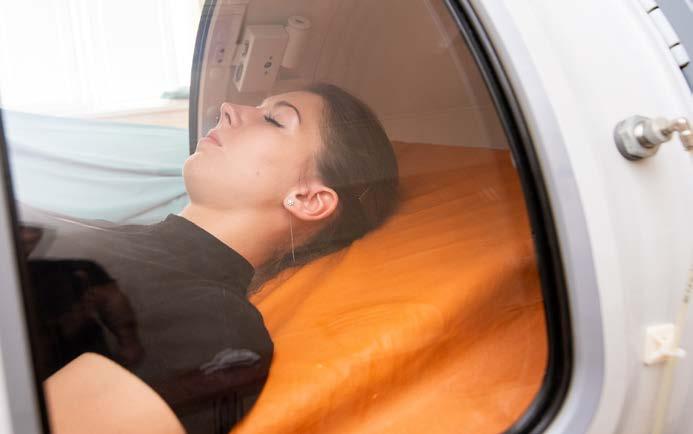
Arterial Gas Embolism (AGE):
AGE is a condition caused by gas in the arterial circulatory system originating from the lungs. In divers, this may result from a rapid ascent without exhalation, which causes overexpansion of the lungs and pulmonary barotrauma. The organ most often affected by gas emboli is the brain; usual signs and symptoms include rapid onset of stroke-like symptoms immediately or within minutes upon reaching the surface. An AGE may occur in water as shallow as five feet after taking one breath of compressed gas followed by a breath-hold ascent.
DID YOU KNOW?
There are two fundamental phases of every dive: the descent and bottom phase, when gas uptake occurs, and the ascent and stop phase, when gas elimination generally occurs.
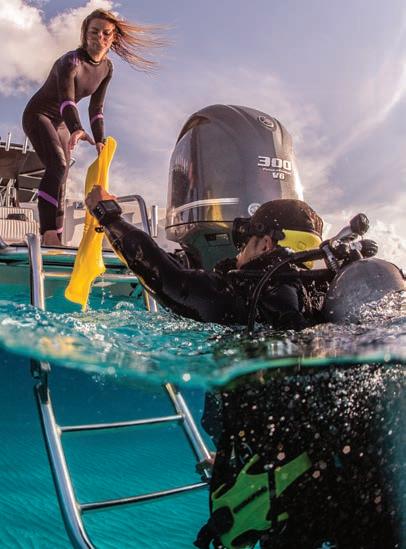
35
COMMON DCS
RISK FACTORS
Workload: The timing and intensity of any exercise during a dive impacts gas uptake and elimination. During your descent and bottom phase, keep your exercise intensity as low as possible to reduce gas uptake. During your ascent and stop phase, mild exercise (less than two to three times resting effort) with very low joint forces is optimal. Any exercise, especially involving high joint forces (such as running), should be avoided as long as possible after a dive.
Thermal stress: During your descent and bottom phase, a cool or thermoneutral state will minimize your inert gas uptake. Avoid cold, but do not go overboard with heating. Exerting yourself as little as possible during this phase is beneficial. During your ascent and stop phase, a relatively warm state promotes inert gas elimination, reducing overall decompression stress.
Breathing gas: The particular breathing gas mixture you use, and how you use it, can play a role in the development of DCS. A mixture known as enriched air nitrox, or simply nitrox, is increasingly popular for recreational diving. The percentage of oxygen in the mix is higher, reducing the nitrogen fraction. That means
there’s less nitrogen uptake at any given depth. Diving nitrox requires additional precautions and training.


Patent foramen ovale (PFO): This is a congenital medical condition characterized by an opening between the left and right atriums of the heart. A large PFO may increase the risk of DCS in divers who develop significant bubble loads. But the correlation between PFO and DCS isn’t clear, since the frequency of PFO in the population is fairly high, while DCS is relatively rare.
Hydration: Sound hydration is important for good health, in general and in diving, but your dive profile, thermal stress, and exertion level are far more important risk factors for DCS.
Sex: There’s little evidence in the literature that sex plays a role in DCS. Some studies suggest women have a slightly elevated risk, but making safer choices can compensate for any slightly elevated physiological susceptibility.
Age: Advancing age is sometimes thought to increase DCS risk; however, rather than increasing susceptibility to DCS, age may instead lower recovery rates after DCS hits.
36
HOW TO
AVOID DCS
Fortunately, all the measures that diminish your likelihood of DCS also enhance your overall diving safety:
To minimize on-gassing, cut back your depth and time exposure. Consider diving with nitrox on air tables (or set your computer to air). Beware of nitrox’s maximum operating depth.
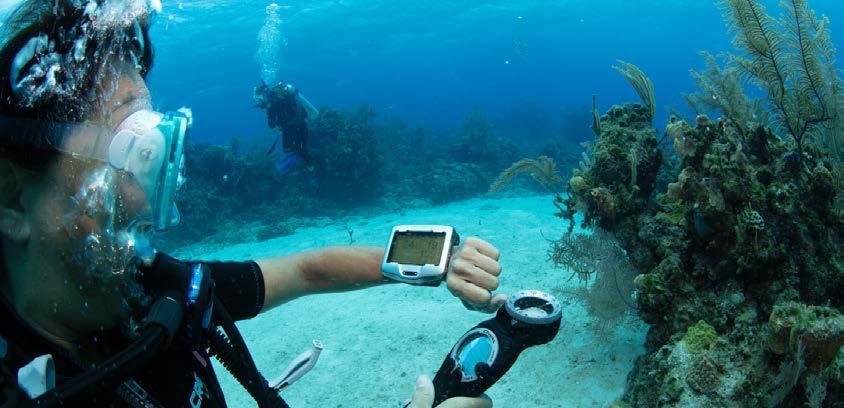
To maximize off-gassing, avoid square-profile diving and practice multilevel diving instead. Add safety stops and appropriate surface intervals.
Understand your dive computer and how to use it.

Acquire enough knowledge so you appreciate the hazards of diving and likely solutions.
Attain sufficient skill, particularly regarding buoyancy control, so all your dives can be conducted as planned.
Practice good buddy selection, so your plans and actions are compatible with those of your diving companions and with safe diving practices.
Maintain good communication with your buddies and address problems quickly, when they’re likely to be most manageable. Informed and thoughtful collective action by all divers in a group helps ensure a good outcome.
No single element is the critical factor when it comes to DCS. Thoughtful divers will educate themselves about potential risks and how to minimize them. Proper training will help you recognize and respond to symptoms if they do occur. For more information, see Decompression Sickness at DAN.org/Health
DID YOU KNOW?
The most frequently received questions by DAN medics are related to:
1. Ears, Nose, and Throat
2. Respiratory Functions
3. Cardiovascular Health
4. Drugs and Medications
37
DIVING AND YOUR HEART
Diving can stress the heart and circulatory system, creating excess demand for oxygen to which your heart must respond. A healthy heart and proper conditioning will help you adapt to the demands of pressure, workload, and exercise. But if you have cardiovascular problems or limited exercise capacity, the blood shifts caused by immersion or sudden bursts of intense exercise can push the limits of your cardiovascular capacity. Being aware of your heart health and maintaining an appropriate level of physical fitness should be an essential element of your dive planning. If you maintain good physical fitness and seek appropriate health screenings, your risk of suffering a cardiovascular event will be greatly reduced.
EFFECTS OF IMMERSION
Immersion in water can affect the cardiovascular system by redirecting more blood to your chest. This increases pulmonary circulation and forces your heart to substantially increase its output, raising your risk of a cardiac event, especially if age or disease have decreased your heart’s capacity for elevated blood output. If the heart’s pumping action begins to fail, fluid backs up into the lungs. This impairs the lungs’ ability to oxygenate your blood and to remove carbon dioxide and nitrogen. It also results in increased pressure in the vessels of the lungs, which can cause fluid to pass through the capillary walls into the lungs’ gas-filled spaces; this can cause a condition known as immersion pulmonary edema. The redirection of blood due to immersion occurs because of two mechanisms:
The hydrostatic pressure of immersion creates a pressure
gradient that drives blood and fluid from your legs to your chest.
The cooling effect of water causes a vasoconstriction (constriction of the blood vessels) and re-directs blood from skin circulation to your core to prevent this.
YOUR PHYSICAL FITNESS
Diving in favorable conditions requires little exertion, making it easy to assume that diving is safe and effortless. But during any dive, perilous conditions can arise that may require vigorous exercise at a moment’s notice. This can stress your cardiovascular and respiratory systems. Those with limited exercise capacity may be pushed to their limits by diving to the point of serious injury and even death. Divers should be aware of their risk factors for cardiovascular disease and of measures they can take to mitigate those factors. Performing regular physical conditioning,
including both aerobic and strength training, is ideal.
PRESENCE OF HEART DISORDERS
The condition of your heart, including its valves, muscles, and electrical wiring affects its ability to pump blood, and certain disorders can reduce its functional capacity. Such disorders may be congenital (present from birth) or acquired later in life; either congenital or acquired heart conditions may be diagnosed early on or may not be evident until they have been present for some time. These are among the heart disorders that can affect diving:
Aortic stenosis and mitral regurgitation: These are the two most common valvular disorders in older adults. Their symptoms vary, depending on which valve is affected and on the condition’s type and severity, but can include chest pain or shortness of breath.
38
Mitral valve prolapse: Also known as “click-murmur syndrome” or “floppy-valve syndrome,” this is due to excess connective tissue in the heart’s mitral valve, so part of the valve protrudes into the left atrium during every contraction.
Patent foramen ovale (PFO): PFO is a fairly common, congenital, generally benign condition characterized by a hole between the heart’s left and right atriums.
Atherosclerosis: This is a buildup of cholesterol and other fatty deposits along the inner walls of the arteries. Atherosclerosis can occur in different parts of the body.
Cerebrovascular atherosclerosis, for example, affects the brain; peripheral artery disease (PAD) the limbs; and coronary artery disease (CAD) the heart itself. CAD can result in a myocardial infarction, or heart attack.
Ischemic heart disease: This condition is characterized by an inadequate supply of blood to the heart muscle. It’s almost always caused by CAD and is the most common form of heart disease.
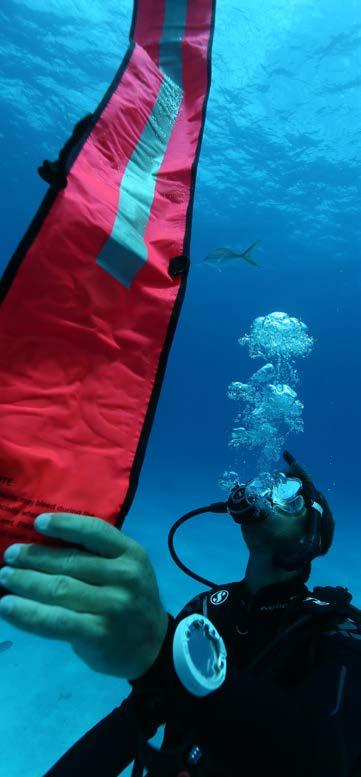
Arrhythmias: The heart’s electrical system controls the rate at which it beats about 70 times per minute or roughly 100,000 times a day.
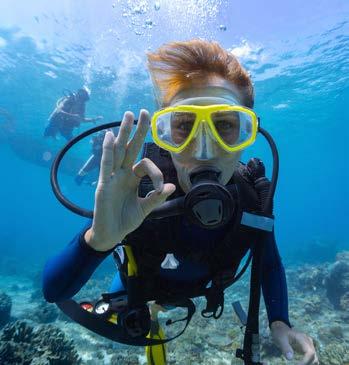
Irregularities in its function can be caused by heart disease and can in turn further damage the heart. The term arrhythmia (or dysrhythmia) refers to any of several disturbances of the heart’s normal rhythm. Serious arrhythmias, such as ventricular tachycardia and many types of atrial arrhythmia, are incompatible with diving. The danger for someone who develops an arrhythmia during a dive is losing consciousness while underwater. Anyone with a cardiac arrhythmia must seek evaluation by a cardiologist before engaging in diving.
DID YOU KNOW?
By 2050, it is estimated that atrial fibrillation (AFib) will affect between 5.6 million and 12 million Americans.
39
PHYSICAL ACTIVITY
RECOMMENDATIONS
1
SEDENTARY BEHAVIOR
Sedentary behavior refers to activities that do not substantially increase one’s heart rate or energy expenditure above the resting level; included in this category are activities like sleeping, sitting, lying down, and watching television. Such activities involve an energy expenditure of 1.0 to 1.5 METs.
2 LIGHT-INTENSITY
PHYSICAL ACTIVITY
Light physical activity— which is often grouped with sedentary behavior but is, in fact, a distinct activity level—involves an energy expenditure of between 1.6 and 2.9 METs and raises the heart rate to less than 50 percent of one’s maximum heart rate. It encompasses such activities as slow walking, deskwork, cooking, and washing dishes.
3
MODERATE-INTENSITY PHYSICAL ACTIVITY
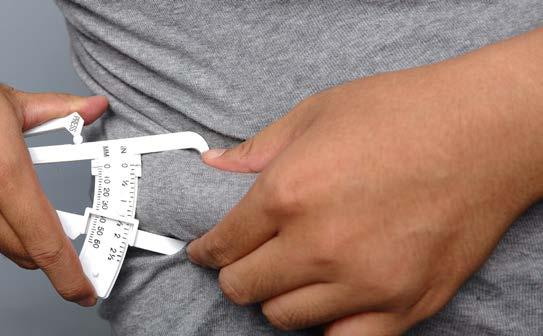
Physical activity that increases the heart rate to between 50 percent and 70 percent of one’s maximum heart rate is considered to be of moderate intensity. For example, 50-yearolds have an estimated maximum heart rate of 170 beats per minute (bpm), so the 50-percent and 70-percent levels would be 85 bpm and 119 bpm. That means a moderate-intensity activity for 50-year-olds is one that keeps their heart rate between 85 bpm and 119 bpm. By contrast, 30-year-olds have an estimated maximum heart rate of 190 bpm, making a moderate-intensity activity one that raises their heart rate to between 95 bpm and 133 bpm.
4 VIGOROUS-INTENSITY PHYSICAL ACTIVITY
A vigorous-intensity activity is one that increases the heart rate to between 70 percent and 85 percent of one’s maximum heart rate. For 60-year-olds, that would be between 122 bpm and 136 bpm; for 25-year-olds, it would be between 136 bpm and 167 bpm.
Detailed physical activity recommendations can be found at cdc.gov/physicalactivity/ everyone/guidelines
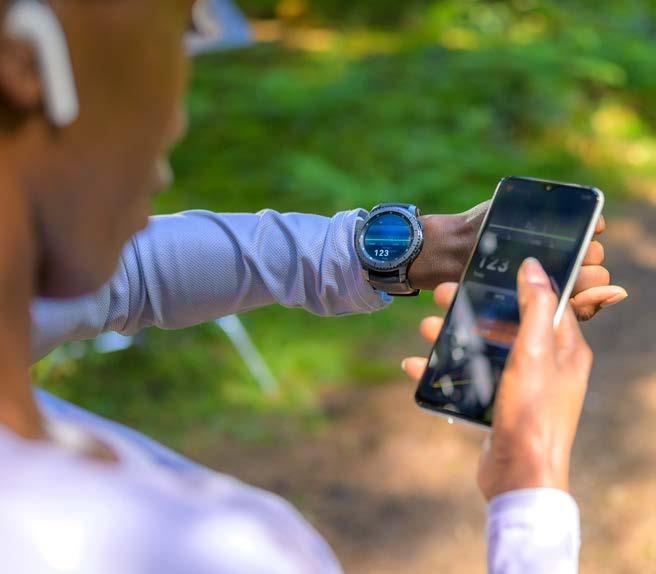
40
AGE AND LIFESTYLE FACTORS
Your heart is affected by aging and by your lifestyle choices. You should consider factors that may increase your risk for cardiac problems and get periodic medical evaluations. Some factors such as family history, gender, ethnicity, and age can’t be changed. Others, including some involuntary health conditions and lifestyle choices, can be modified. Some involuntary conditions such as high blood pressure, high cholesterol, or diabetes can be controlled with medication, as well as with diet and lifestyle adjustments.
Lifestyle risk factors for heart disease include tobacco use, unhealthy dietary choices, physical inactivity, and excessive alcohol consumption all of which can be voluntarily changed. These are among the age and lifestyle factors that can affect your heart:
Hypertension (high blood pressure): This is a common medical condition in divers and the general population. It means the pressure exerted on the walls of your blood vessels is higher than normal.
Hyperlipidemia (high cholesterol): This means the levels of lipids and other fats in your blood are higher than normal. It’s determined by measuring three factors: highdensity lipoproteins (HDLs), lowdensity lipoproteins (LDLs), and triglycerides (a type of body fat).
Overweight and obesity: These conditions are often (but not necessarily) associated with a higher proportion of body fat and can result in extra stress on the heart. They are determined by any of several measurements: body mass index (a ratio of weight to height), waist size, waist-to-hip ratio, or skin-fold thickness.
Metabolic syndrome: This affects how the body uses and stores energy. It’s associated with an elevated risk of cardiovascular disease, as well as endothelial dysfunction (abnormalities in the linings of the body’s organs and cavities), and chronic low-grade inflammation.
These and other conditions may or may not be compatible with safe diving, depending on their severity and how well you’re able to control their effects.
DID YOU KNOW?
Around 18.7 million adults in the U.S. have asthma.
More than 12% of the U.S. population of adults 20 years and older have diabetes.

41
OTHER HEALTH CONSIDERATIONS
Various other health considerations can affect your fitness to dive. Among such conditions are the following:
Diabetes mellitus (DM): This is a disorder of the endocrine system and is a result of either insufficient production of insulin or resistance by the body’s cells to normal (or even high) levels of insulin. People with DM can be affected by either hyperglycemia (excessively high blood glucose or blood sugar) or hypoglycemia (excessively low blood glucose). Hypoglycemia presents the greatest risk for a diver, as it can cause confusion, sweating, a rapid heartbeat, unconsciousness, and even death. Hyperglycemia can also cause unconsciousness, though usually with a much slower onset. It goes without saying that impaired consciousness underwater can be fatal. Although hypoglycemia occurs most commonly in type 1 diabetes (also known as juvenile or early-onset diabetes), it can also occur in those with type 2 diabetes who take oral hypoglycemic medication. DAN suggests that divers with diabetes check their blood glucose levels at three separate intervals, both before getting in the water and immediately after a dive. This will help you make appropriate diving and eating decisions.
Asthma: Asthma is a lung disorder caused by excessive contraction of the muscles surrounding the bronchi (the breathing tubes); this results in narrowing of the tubes, or bronchoconstriction.
Symptoms include wheezing, chest “tightness,” cough, and breathlessness. Asthmatic bronchoconstriction can be triggered by allergens, noxious fumes, cold air, exercise, and/or respiratory infections even just a common cold. Diving with asthma is potentially very risky. The two primary concerns are as follows:
Scuba diving results in a reduction in breathing capacity due to the effects of immersion and the increase in breathing resistance caused by gases’ higher density at depth. If your breathing capacity is already reduced by asthma, you may not have sufficient reserve to accommodate the increased demands of diving.
The narrowing of your bronchi, and the associated production of excessive mucus, can inhibit exhalation during ascent. This predisposes you to pulmonary barotrauma, which can
lead to pneumothorax, pneumomediastinum, subcutaneous emphysema, and/or an arterial gas embolism.
Accordingly, physicians trained in diving medicine usually recommend that anyone with asthma never dive. However, if you can demonstrate normal breathing function at rest and after strenuous exercise, your risk of diving with asthma may be acceptable.
DID YOU KNOW?
Diving is not considered regular exercise. If you exercise regularly at an intensity that keeps your heart rate above 70 percent of maximum for more than 90 minutes a week, it’s a good bet that you’re physically fit enough to dive recreationally under a variety of conditions. Diving itself, however, typically does not constitute regular exercise.
42
BASIC HEALTH TIPS
Adopting a healthy lifestyle early in life can help postpone ailments associated with aging.
Prior to diving, you should take an honest assessment of whether you are medically fit to dive. Be vigilant for signs of acute illness (including congestion) and familiarize yourself with the risks and essential precautions associated with any chronic diseases. When considering your medical fitness to dive, heed the following suggestions:
Acute illness that lasts more than a few days or leaves you feeling exhausted should prompt a delay to diving.
Postpone your dive until you are ready to exercise at your pre-illness level.
If you have any concerns, or if the illness is of an unusual duration or severity, consult with your physician.
Chronic diseases may affect your fitness to dive and your dive risks even if you perform well in other activities.
Some health conditions, especially in advanced stages, may make the risks to you and your dive buddies unacceptably high.
In less advanced or more stable medical conditions, divers may continue safe and enjoyable diving with proper guidance from their physician.
During your annual physical exam or following any changes in your health status, consult your physician to ensure you have medical clearance to dive.

TRAVELRELATED MEDICAL ISSUES
Divers are generally aware of how to avoid hazardous marine life, how to minimize getting the bends, and why it’s essential to be honest on your medical questionnaire. But all divers are also travelers, so make sure you’re also aware of any travel-related medical conditions to which you may be vulnerable. From common concerns, such as dehydration or traveler’s diarrhea, to much rarer maladies, such as West Nile virus, understanding risk factors, preventive measures, and appropriate responses to travelrelated medical conditions can help keep you healthier and safer in and out of the water.
Before you leave home, research what your medical insurance policy covers; if need be, contact your insurance company for details about what expenses are covered and where your policy is valid.
If you become seriously ill while traveling, either DAN or your country’s embassy or consulate can help you find medical care. (For a complete list of U.S. embassies and consulates, visit usembassy.gov.)
If you experience a fever or flu-like illness while traveling, it’s essential to seek medical attention immediately.
43
DIVE TRAVEL
Whether you’re taking a 23-hour flight to Malaysia or a 23-minute drive to the shore, diving involves some form of travel. The allure of a vacation at an exotic dive site or the promise of spotting a fish you’ve never seen before is part of what attracts many divers to the sport.
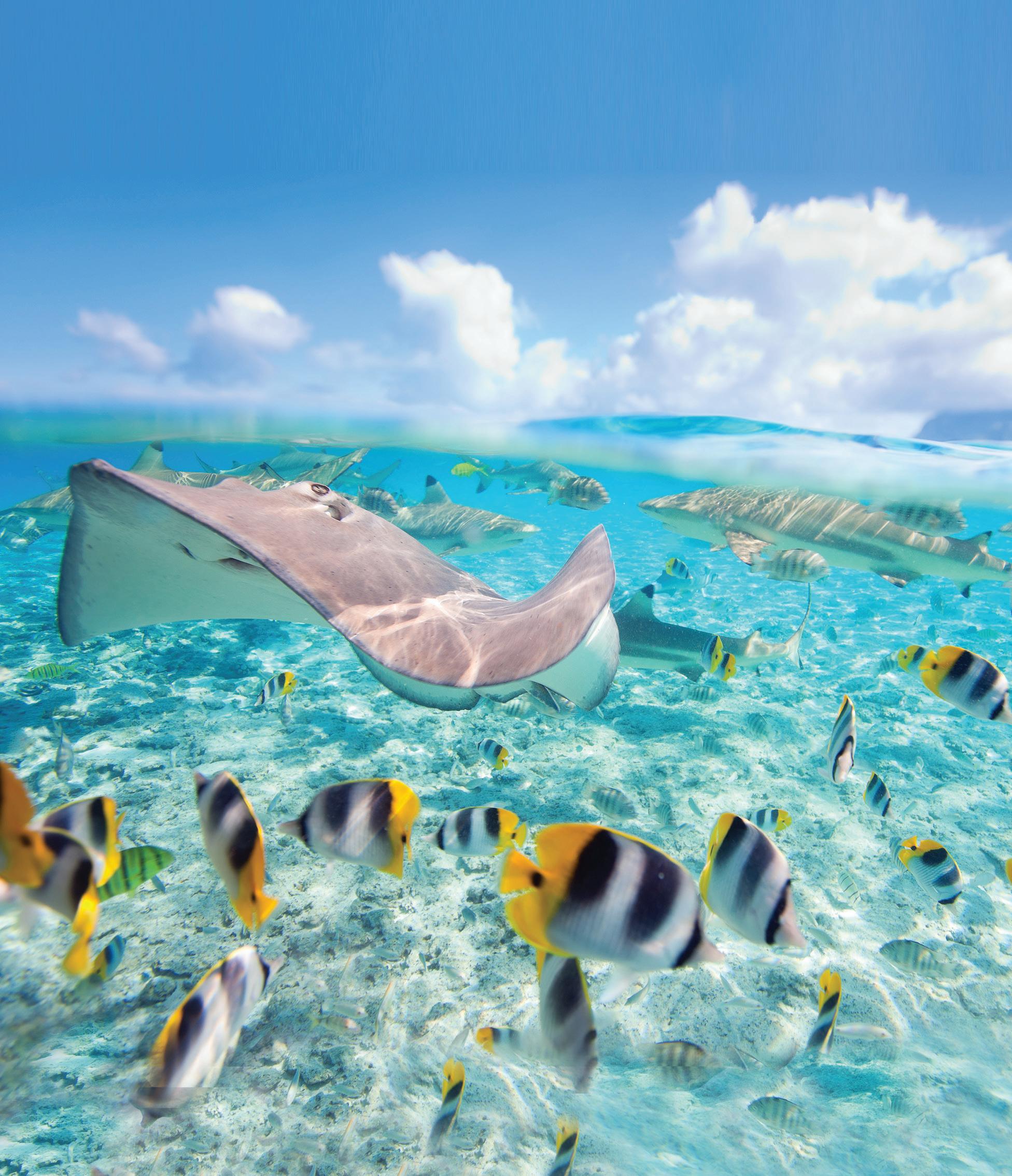
These are some of the factors to keep in mind regarding dive travel.

EQUIPMENT CONSIDERATIONS
Air travel is diver-friendly, so many divers opt to bring their gear with them to their travel destinations. Airlines permit you to pack your regulator, buoyancy compensator (BC)/buoyancy control device (BCD), dive computer, masks, fins, and snorkels in either carry-on or checked baggage; cutting tools and spearguns must be sheathed and secured if they’re packed in checked baggage. In general, traveling by air with cylinders is discouraged.
It’s a good idea to carry on your comfort and safety essentials in case your gear is delayed. Having your regulator, dive computer, mask, and swimsuit with you can help ensure you don’t miss your first scheduled dives, even if your gear bag is lost or delayed. You’ll probably also want to carry on any expensive or sensitive photography equipment.
If you decide to check your diving gear, include a note inside your checked bag to explain the equipment in case the bag is opened by security personnel to facilitate their inspection of it.
45
CARRY ON CARRY ON OR CHECK CHECK ONLY Regulator Dive computer Mask Swimsuit BC/BCD Fins Snorkel Cutting Tools Spearguns Cylinders (valves must be removed) BECAUSE THE WORLD AWAITS
DOMESTIC TRAVEL TIPS
One of the benefits of diving domestically is that it can be more spontaneous and is usually less costly than international travel. Even so, knowing how to get — and stay — prepared for a nearby dive, even if you live just a short ride from the coast, can help make your local trips easier, safer, and more enjoyable.
Even a short flight or a road trip of an hour or more can leave you feeling cramped, dehydrated and fatigued, so make sure to stretch and hydrate regularly while you’re en route. And don’t be afraid to call off your dive or put off your departure until you know you’re ready.
GET PREPARED
BEFORE YOU GO
Create a packing checklist based on your typical dives. Maintain your gear so you can grab it and go. Assemble a first aid kit and a save-a-dive kit. Keep your relevant certifications up to date.
Research the weather, currents, and water temperatures at your destination. Customize your packing checklist for this specific trip. Check and if necessary replenish your first aid kit. Tell someone where you are going. Remember to bring plenty of water and healthy snacks.
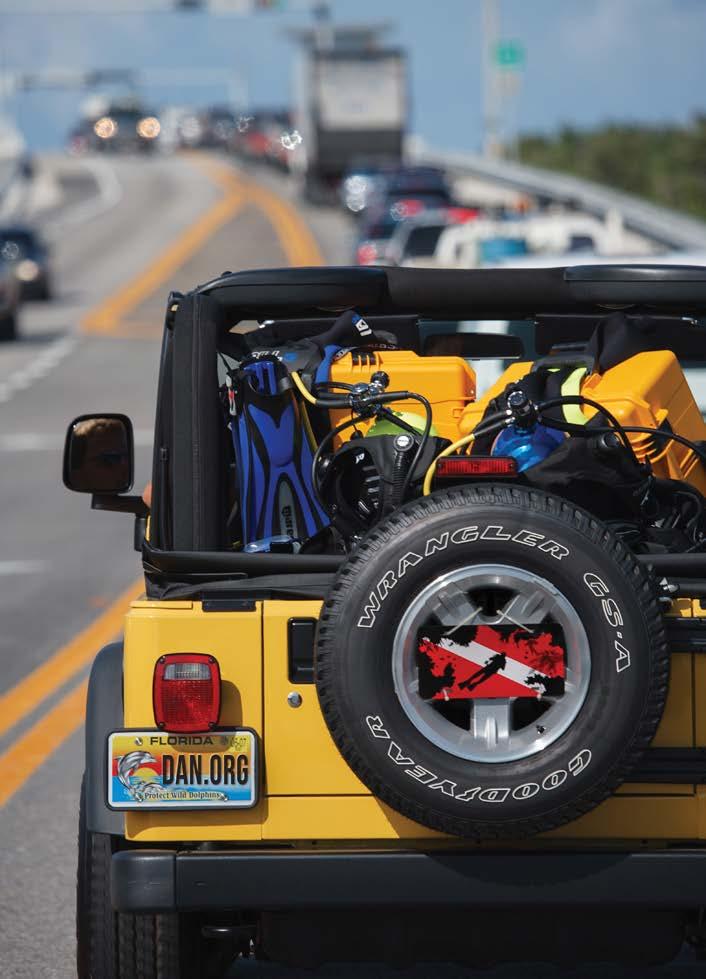
46
INTERNATIONAL TRAVEL TIPS
When traveling abroad for a dive trip, you can expect to encounter beautiful vistas, exotic ocean life, and exciting topside adventures, but you also need to be prepared for the hassles of travel. You can mitigate the difficulties of traveling internationally by getting ready in advance. In the months leading up to your trip, use the following checklist to make sure you’re on track:
2 MONTHS
BEFORE TRAVEL:
Create a packing checklist based on your typical dives.
Determine if you need a tourist visa.
Find out whether you need any vaccinations.
Complete RSTC medical form and have copy of physician sign-off if needed.
Decide whether you want to apply for Global Entry.

1 MONTH BEFORE TRAVEL:
Check your destination country’s laws about your prescription medications. Acquire local currency and talk to your bank about international ATM arrangements. Find out if there are foreign transaction fees associated with your credit cards. Enroll in the Smart Traveler Enrollment Program (STEP), which connects you with the U.S. embassy or consulate closest to your location.
2
WEEKS
BEFORE TRAVEL: Customize your packing checklist. Set up a global calling plan. Inform your credit card companies of your intention to travel abroad. Make sure you have purchased or renewed your travel insurance.
1 WEEK BEFORE TRAVEL:
Make two copies of your passport (a color copy is preferred), driver’s license, credit cards, itinerary, lodging confirmation, and visa (if you need one). Leave one set of copies with someone at home, and pack the second set someplace separate from the original documents.

Contact your post office to request that they hold your mail while you’re away.
Pack everything you won’t need before your trip.
24 HOURS BEFORE TRAVEL:
Check in to your flight, and make sure you have a seat assignment. Run back through your packing list again, and make a copy to help you pack for the return trip (so you won’t forget your toiletries, chargers, medications, etc.). Notify someone of your travel plans.
47
LOCAL LAWS
If you’re planning a dive trip abroad, an important but often overlooked part of your preparation should be to review your destination’s laws. If you break those laws, even unknowingly, you’re still subject to that country’s penalties. Here’s what to check:
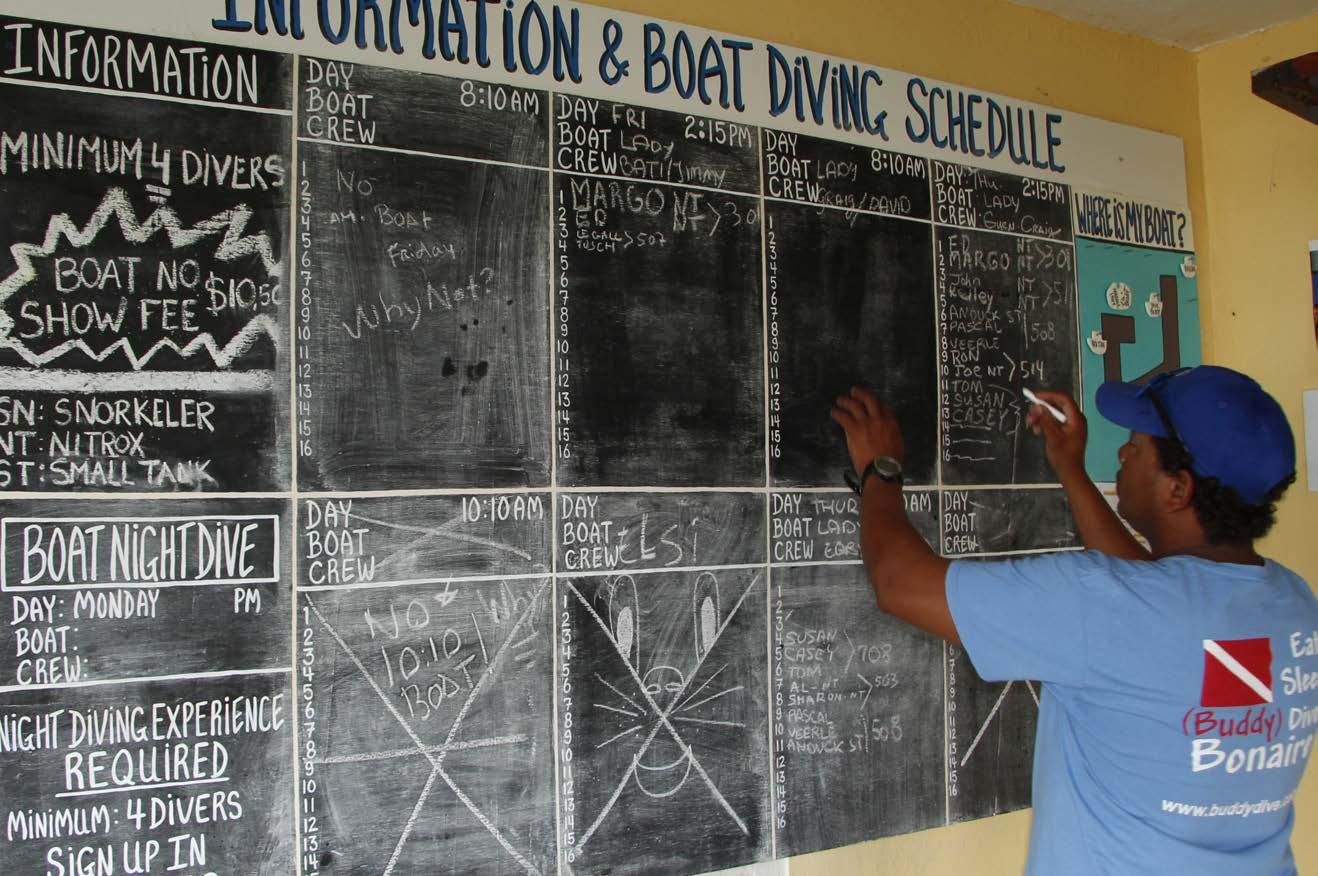
Weapons: Weapons laws vary widely between countries. It’s best to avoid carrying even small knives, as they carry big penalties in certain countries. If you intend to pack dive knives or spearguns, make sure you’re familiar with the country’s laws and protocols surrounding such gear.
Photography: Often tourists don’t think twice about what they’re photographing, but in some locations, snapping pictures
of government buildings, holy sites, or copyrighted landmarks is prohibited. Make sure you know what’s off limits. If in doubt, ask before you click.
Drones Some jurisdictions restrict drone usage or require operators to comply with specific guidelines.
Finances: Exceeding your credit limit can be a punishable offense in certain countries, so keep an eye on your pocketbook
and immediately report any stolen cards.
Driving: Before you get behind the wheel, study local road signs and driving laws and confirm that you have the proper documentation to operate a vehicle in that country.
Prescriptions: Some medications may be prohibited at your destination or in countries through which you travel. Consult with your destination country’s embassy well in advance of your trip to find out if you need to acquire approval for your particular drug. Keep your medications in their original containers, bring copies of your prescriptions, and carry a signed letter from your prescribing physician.
If you experience legal difficulties abroad, contact your country’s local embassy for assistance. A good source of country-specific information for all divers, especially for U.S. citizens, is the U.S. Department of State (see state.gov).
DAN members can also activate DAN TravelAssist, a complimentary service of DAN membership that provides legal referrals and assistance whenever a member is traveling 50 miles or more from home.
FLYING AFTER DIVING
Flying to a destination near sea level before diving poses virtually no risk. Flying after diving, however, increases decompression stress.

Follow these guidelines when traveling:
Dive Profile
Single no-decompression dive 12 hours or more
Multiple dives in a day 18 hours or more
Multiple days of diving 18 hours or more
Dives requiring decompression stops
Longer than 18 hours
49
Minimum Preflight Surface Interval Suggestion
INTRODUCTION TO DAN
Diving is exciting, but it involves some risks. That’s why you should take advantage of every bit of expert advice available to you. One of your best, most reliable sources for such advice is DAN.

PUT DAN ON YOUR SIDE
DAN strives to make every dive accident- and injury-free. The world’s most recognized and trusted dive safety organization, Divers Alert Network (DAN), has remained committed to the health and well-being of divers for more than 40 years. The organization’s research, medical services, and global-response programs create an extensive network that supports divers with vital services such as injury prevention, educational programs, and lifesaving evacuations.
STEP 1 JOIN FIRST
DAN membership is your first step to becoming a smarter, safer diver. Membership provides proven benefits for divers and travelers, such as Emergency Medical Transportation & Travel Assistance Benefits1, access to our 24/7 emergency hotline, and more.
STEP 2
ADD DIVE ACCIDENT INSURANCE
DAN membership gives you access to purchase DAN dive accident insurance2. Add this specialized coverage to your membership to help protect against the costs of a covered diving accident often left uncovered by typical health insurance.
STEP 3 ENJOY OTHER DAN RESOURCES
Once you are a member, you’ll have access to DAN’s Health and Diving Reference Library, case summaries, safety quizzes, Smart Guides, videos, and so much more.

51
DAN MEMBERSHIP
As a DAN member, you’ll enjoy a suite of valuable benefits designed to help make you a safer, smarter diver.
ENHANCED MEMBERSHIP
Taking Safety To Another Level
DAN’s Enhanced Membership builds upon the proven benefits of Regular Membership and adds higher coverage limits and a host of other valuable benefits to meet the needs of today’s dive travel enthusiasts.

Includes a print subscription plus digital access to Alert Diver magazine.
REGULAR MEMBERSHIP
Essential Benefits For Every Diver
DAN Regular Membership provides proven benefits for dive travelers and offers digital access to Alert Diver magazine online or through the DAN app.

52
DAN.org/Membership
1DAN Regular and Enhanced membership includes automatic enrollment in DAN TravelAssist®. Emergency Medical Transportation and Travel Assistance Benefits are available for both diving and nondiving emergencies, with an aggregate benefit limit for Regular Membership up to $150,000 ($100,000 for residents of NY) and an aggregate benefit limit for Enhanced Membership up to $500,000. Enhanced Membership not available for residents of NY. DAN TravelAssist® benefits are provided by DAN, Travel Guard, and other service providers depending on the benefit. To access these benefits or to request emergency medical transportation or a severe infectious disease evacuation, you must contact DAN TravelAssist for assistance. Emergency medical transportation and severe infectious disease evacuation transportation arranged directly by you may not be reimbursed. Emergency Medical Transportation and Travel Assistance Benefits and Severe Infectious Disease and Quarantine Coverage Benefits are insured benefits underwritten for residents in all states except New York, by National Union Fire Insurance Company of Pittsburgh, Pa., a Pennsylvania insurance company, with its principal place of business at 1271 Ave of the Americas FL 37, New York, NY 10020-1304. It is currently authorized to conduct insurance business in all states and the District of Columbia. NAIC No. 19445. For residents of NY, Emergency Medical Transportation and Travel Assistance Benefits insurance is underwritten by The United States Life Insurance Company in the City of New York, NAIC No. 70106 domiciled in the state of New York, with its principal place of business of 28 Liberty Street, Floor 45th, New York, NY
53
This is only a brief description of the coverage(s) available. The Policy will contain reductions, limitations, exclusions, definitions and termination provisions. Coverage may vary by state or may not be available in all states. In Canada, AIG Insurance Company of
0A8. MEMBERSHIP COMPARISON 1 REGULAR Membership ENHANCED Membership Emergency Medical Transportation & Travel Assistance Benefits Up To US$150,000 Up To US$500,000 Alert Diver Magazine Subscription Digital Only Print + Digital DAN TravelAssist ® Benefits Regular Enhanced Global Security Evacuation O P Search & Rescue Coverage O P Access To Purchase DAN Dive Accident Insurance P P 24/7 Emergency Hotline P P Medical & Safety Consultations P P New Severe Infectious Disease & Quarantine Coverage O Up To US$5,000 Annual Individual Membership US$40 US$75 Annual Family Membership US$60 US$100
10005-1400.
Canada, 120 Bremner Blvd., Suite 2200, Toronto, Ontario, M5J
DIVE ACCIDENT INSURANCE
DAN dive accident insurance2 is an affordable way for divers to obtain insurance against the costs of dive injuries that are often left uncovered by typical health insurance. Plans pay 100% of eligible accident medical expenses (up to US$500,000).
Join DAN first, then add dive accident insurance Plans recognized worldwide Some plans cover nondiving as well as diving injuries Pays 100% of eligible accident medical expenses up to US$500,000 Annual coverage starts at US$40/year Available in the U.S. and Canada Includes coverage for divers age 70 and over
THE COVERAGE YOU NEED
DAN dive accident insurance provides coverage for hyperbaric chamber treatment, physician and hospital charges, and emergency transportation by ground, air, or marine ambulance.
2Coverage and availability varies by state, province and plan. In Canada, DAN Dive Accident Insurance is underwritten by AIG Insurance Company of Canada, Group Policy No. SRG 9134763. For residents of NY, insurance is underwritten by The United States Life Insurance Company in the City of New York, NAIC No. 70106 domiciled in the state of New York, with its principal place of business of 28 Liberty Street, Floor 45th, New York, NY 10005-1400. It is currently authorized to transact business in all states, plus DC, except PR. This summary is a brief description of benefits only and is subject to the terms, conditions and limitations. Coverage may vary by state. AG 12070 For residents of all other U.S. states and the District of Columbia insurance is underwritten by National Union Fire Insurance Company of Pittsburgh, Pa., a Pennsylvania insurance company with its principal place of business at 1271 Ave of the Americas FL 37, New York, NY 10020-1304. It is currently authorized to conduct insurance business in all states and the District of Columbia. NAIC No. 19445. This summary provides only brief descriptions of the coverages available. The issued policy and certificate will contain reductions, limitations, exclusions, definitions and termination provisions. Full details of the coverage will be contained in the issued policy and certificate. If there are any conflicts between this summary and the issued policy and certificate, the policy and certificate shall govern in all cases. Coverage may vary by state or may not be available in all states.
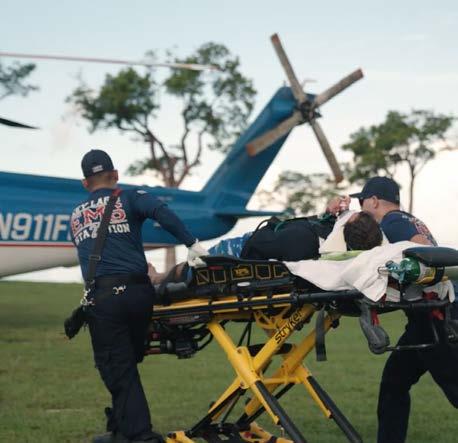
54
DAN.org/Insurance
TRIP INSURANCE
Protect One Special Adventure Covers one trip against certain unforeseen events along the way. Budget-friendly rates make it perfect for a quick road trip or international dive travel.
Starts around $87/per trip
TRAVEL INSURANCE
DAN has protected scuba divers and snorkelers against the risks associated with dive injuries for more than 40 years. Today, thousands of people around the world trust DAN to protect their travel as well.*
MEDICAL PROTECTION Travel confidently knowing you have Medical and Dental coverage, Accidental Death and Dismemberment (Travel Accident), and Emergency Assistance and Transportation if you need help.
TRAVEL PROTECTION Help reduce travel headaches with Trip Cancellation and Interruption coverage, Missed Connection and Travel Delay benefits plus Rental Car Damage coverage.


BAGGAGE PROTECTION Baggage and Baggage Delay coverage are essential for lost, damaged, stolen, or delayed bags on a trip. Sporting Equipment coverage is also available.
*Explore DAN.org/Travel for COVID-19 coverage details. Terms and Conditions apply. DAN travel insurance is only available to residents of the US states and the District of Columbia and may not be available in all jurisdictions. Travel Protection Plans are administered by Customized Services Administrators, Inc., CA Lic. No. 0821931, located in San Diego, CA and doing business as CSA Travel Protection and Insurance Services and Generali Global Assistance & Insurance Services. Plans are available to residents of the U.S. but may not be available in all jurisdictions. Travel retailers receive payment from CSA related to the offer of travel insurance. Benefits and services are described on a general basis; certain conditions and exclusions apply. Travel insurance coverages are underwritten by: Generali U.S. Branch, New York, NY; NAIC # 11231. Generali US Branch operates under the following names: Generali Assicurazioni Generali S.P.A. (U.S. Branch) in California, Assicurazioni Generali – U.S. Branch in Colorado, Generali U.S. Branch DBA The General Insurance Company of Trieste & Venice in Oregon, and The General Insurance Company of Trieste and Venice – U.S. Branch in Virginia. Generali US Branch is admitted or licensed to do business in all states and the District of Columbia. A112372202
ANNUAL TRAVEL INSURANCE


Protect Your Travel All Year Long Covers you on every trip you take during the year any time you travel 100 miles or more from home, round trip. Great benefits make it ideal for frequent business or vacation travelers.
Starts around $309/per year
55
DAN.org/Travel-Insurance
MEDICAL SERVICES


DAN’s medical assistance services are available to divers, dive professionals, and health care providers. We offer an emergency hotline, medical information, physician consultations, continuing medical education, and a worldwide referral network of doctors who evaluate and treat divers.
24/7 EMERGENCY HOTLINE
When you need it most, DAN will be here to help. We are on call 24 hours a day, 365 days a year at +1 (919) 684-9111 to assist you in the event of a dive emergency, no matter where you travel. We coordinate emergency evacuations and cover the costs for DAN members up to US$500,000 per person.
MEDICAL INFO LINE
DAN staff members are available during regular business hours at +1 (919) 684-2948 to answer your questions about dive medicine and fitness to dive. Our team of doctors, nurses, paramedics, and EMTs offers medical information, referrals, evacuation assistance, and more via phone and email.

SAFETY RESOURCES
This collection of online resources provides valuable information about the most important aspects of diver health and safety such as cardiovascular health, ears and equalization, decompression sickness, hazardous marine life injuries, and much more.
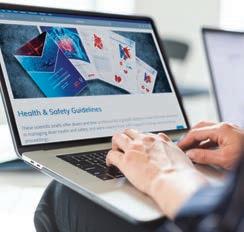
REFERRAL NETWORK
DAN maintains a worldwide network of physicians and chambers that serve the diving public. If you are looking for a dive physical or would like to speak with a dive medicine specialist near you, give us a call at +1 (919) 684-2948
56
DAN.org/Health-Medicine
SAFETY SERVICES
DAN’s primary mission is to assist injured recreational divers. An important secondary mission is to prevent diving injuries. As part of a global campaign to reduce dive injuries and fatalities, DAN strives to fulfill its vision of making every dive accidentand injury-free by identifying and mitigating risks associated with diving operations.
DIVER SAFETY
DAN offers informational resources on a wide range of health and safety topics. These resources help divers make informed decisions and stay safe before, during, and after dives.

DIVE OPERATION SAFETY
DAN works directly with dive operators on a variety of initiatives including hazard identification and risk assessment training, emergency planning tools, and more. We focus on realistic and pragmatic solutions to help owners, operators, and staff identify hazards before they lead to injuries or losses.
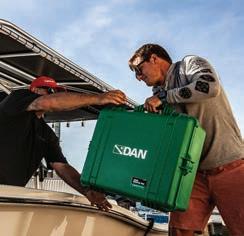
CHAMBER SAFETY
DAN engages with chambers in a variety of ways. DAN’s recompression chamber network is a database of chambers that are available to treat injured divers. Our Recompression Chamber Assistance Program (RCAP) supports chambers in need through safety assessments, staff training, and grants.

57
DAN.org/Safety-Prevention
RESEARCH
DAN Research supports DAN’s mission of advancing dive safety by promoting evidence-based preventive measures. The DAN research team collaborates with leading scientists and research institutions to address questions about the safety of underwater exploration.

RESEARCH STUDIES
For decades, DAN Research has conducted studies on subjects of practical interest to divers such as flying after diving, preventing decompression illness, and diving with diabetes. These studies, conducted both in the field and in the lab, provide a solid foundation for globally accepted standards of safe diving.

PUBLICATION LIBRARY
DAN provides free access to medical publications, articles, and reports related to dive research, medicine, and safety. You can read DAN’s annual diving reports, risk assessment guides, workshop proceedings, and more.

GRANTS & COLLABORATION

In addition to conducting our own studies, DAN supports and promotes the work of others in the field through collaboration and funding. Our efforts enable us to share knowledge, propose solutions and reach beyond our limitations to discover innovative ways to improve safety for divers everywhere.

58
DAN.org/Research-Reports
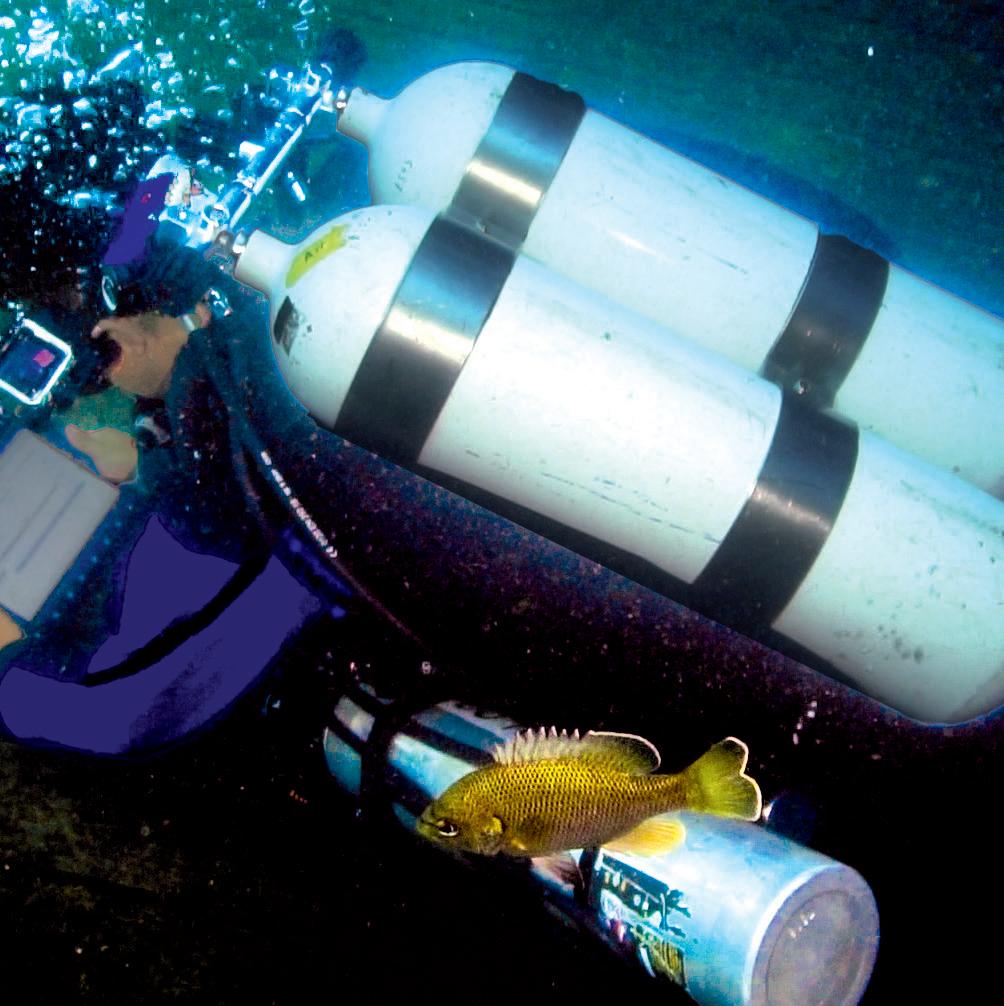
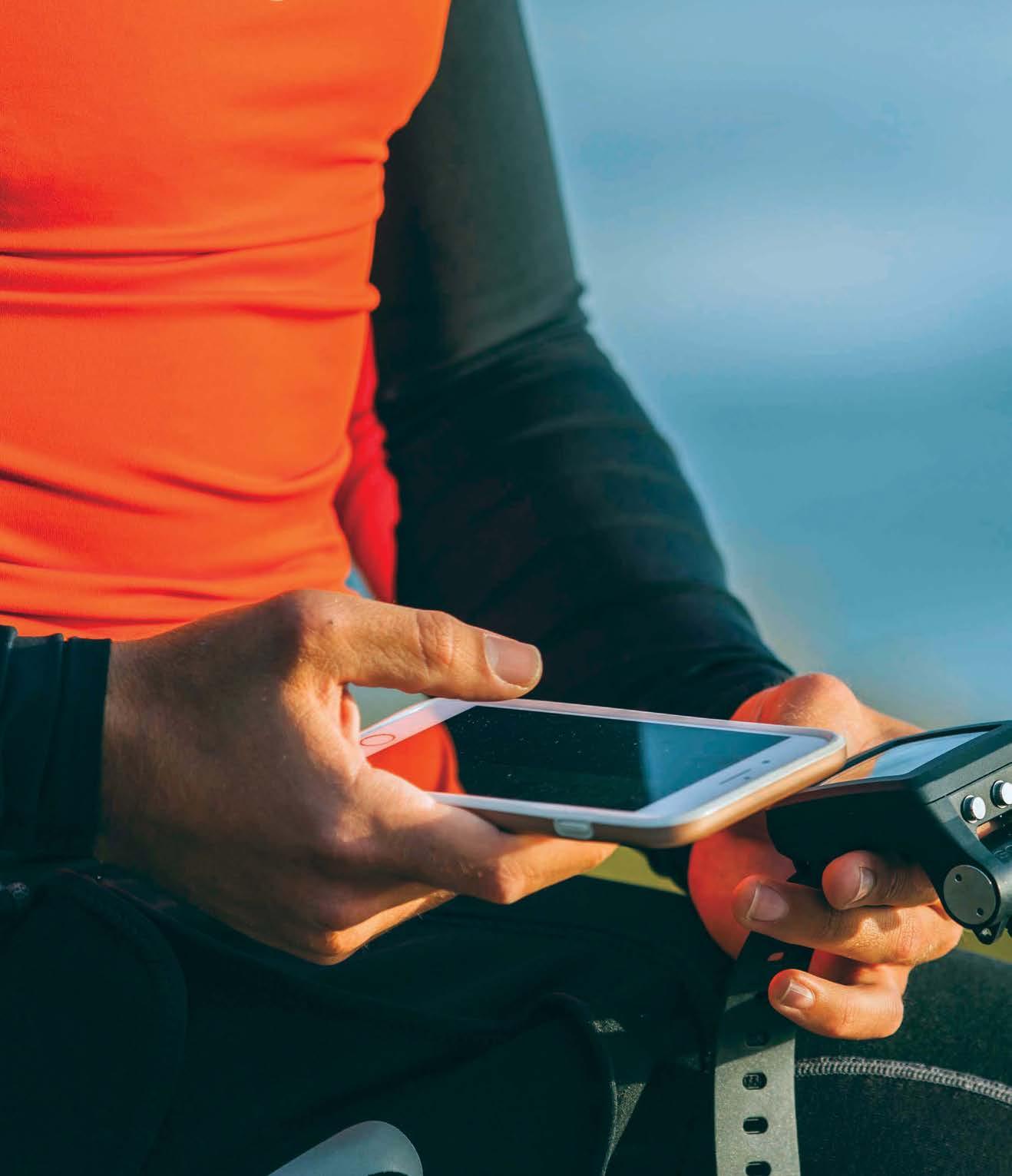
60
BECAUSE LEARNING NEVER ENDS
Aortic stenosis: A narrowing of the heart’s aortic valve, which prevents the valve from fully opening and obstructs the flow of blood from the heart into the aorta and the rest of the body.
DIVING GLOSSARY
Arterial gas embolism (AGE): A condition caused by gas in the arterial circulatory system originating from the lungs. It is often caused by a sudden reduction in ambient pressure, such as a rapid ascent without exhalation. The organ most often affected is the brain; typical signs and symptoms of AGE include rapid onset of stroke-like symptoms within 15 minutes after reaching the surface.
Barotrauma (BT): A condition caused by a change in ambient pressure in a gas-filled space; if gas is trapped in a closed space within the body, the gas will be compressed as a diver descends and will expand as a diver ascends. Barotrauma injuries of descent include ear squeeze, tympanic membrane rupture and sinus squeeze. It can affect both breath-hold divers and divers breathing underwater from a compressed gas source. Injuries of ascent include pulmonary barotrauma, which can result in an air embolism, pneumothorax, or pneumomediastinum.

Breathing gas: Breathing gas, back gas, mix, and air all refer to what divers breathe from their tanks. Breathing gas and back gas are general terms and can include air, nitrox, heliox, or some other mixture of diving gases. Mix is a generic term for the particular mixture of gas a given diver is using. And air refers specifically to normal atmospheric gas of about 21 percent oxygen and 79 percent nitrogen (roughly the composition of surface-level air). Other gas mixes include nitrox and heliox mixes.
Cnidocyte: An explosive cell on the surface of an aquatic invertebrate known as a cnidarian; these specialized cells contain nematocysts, which are fired upon mechanical stimulation of a small hair-like trigger (called the cnidocil). See also “nematocyst.”
Decompression sickness (DCS): A form of decompression illness in which dissolved gases come out of solution and form bubbles inside the tissues of the body. It is often caused by a sudden reduction in ambient pressure, such as a rapid ascent.
Dermonecrotic: A condition characterized by necrosis, or cell and tissue death, of the skin, or dermis.
61
Here are definitions for some of the terms that you’re likely to encounter as you continue your diving education:
Dive profile: A set of depth-timegas points describing a dive. The number of collection points depends on the minimal recording interval of the dive recorder and can vary from one second to one minute. A recording interval of five seconds or less provides sufficient detail for DAN studies of decompression safety.
Envenomation: The process by which venom or toxin is injected into one organism by another via a bite, puncture, or sting.
Hydrostatic pressure: Pressure exerted by a liquid at rest, at any given point within the liquid, due to the force of gravity.
Hyperglycemia: A condition in which blood glucose (sugar) is higher than normal.
Hypoglycemia: A condition in which blood glucose (sugar) is lower than normal.
Immersion pulmonary edema: A shift of fluid into the air-filled space of the lungs due to immersion. Factors thought to play a role in the condition include fluid loading, cold stress, suit and breathing system resistance, exercise, and high gas density. The net effect is an increase in pulmonary pressure and membrane permeability, which drives fluid out of the bloodstream.
Intense physical activity: Physical activity involving substantial muscular forces and joint loading
(the application of forces on joints); it’s believed to transiently increase micronuclei activity.
Micronuclei: Micronuclei are the presumed agents of inflation that enhance bubble formation.
Mitral regurgitation: A disorder of the heart’s mitral valve characterized by a failure to close properly, allowing blood to leak back out of the left atrium.
Nematocyst: A small structure housing a coiled, lancet-like element through which venom is injected into prey. See also “cnidocyte.”
Pneumothorax: Rupture of lung surface and penetration of gas in the pleural space (the fluid-filled area around the lungs), resulting in collapse of the lung on the affected side.
Pneumomediastinum: Exit of alveolar gas into a space around the heart (but not within the heart or blood vessels), usually as a result of pulmonary overextension; also known as “mediastinal emphysema.”
Pulmonary circulation: Portion of the cardiovascular system that carries deoxygenated blood from the heart to the lungs and then returns oxygen-rich blood back to the heart.
Thermal conductivity: Ability of a substance to conduct heat.
Thermoneutral state: A condition when the heat exchange between a
substance and its environment is in balance.
Trim: A diver’s posture in the water in terms of balance and alignment.
Type 1 DCS: A form of decompression sickness (DCS) characterized by musculoskeletal pain and mild cutaneous, or skin, symptoms such as itching, a mild rash, or joint or muscle pain.
Type 2 DCS: A more serious form of decompression sickness, characterized by symptoms that typically fall into three categories: neurological, inner ear, and cardiopulmonary. Symptoms include impaired gait, bladder control problems, paralysis, a change in mental status, vertigo, dizziness, vomiting, dry cough, and chest pain. These complaints, which are due to high bubble loads in the lungs, can compromise the lungs’ ability to function, threatening the affected diver’s health, and even life, if treatment is not sought promptly.
62
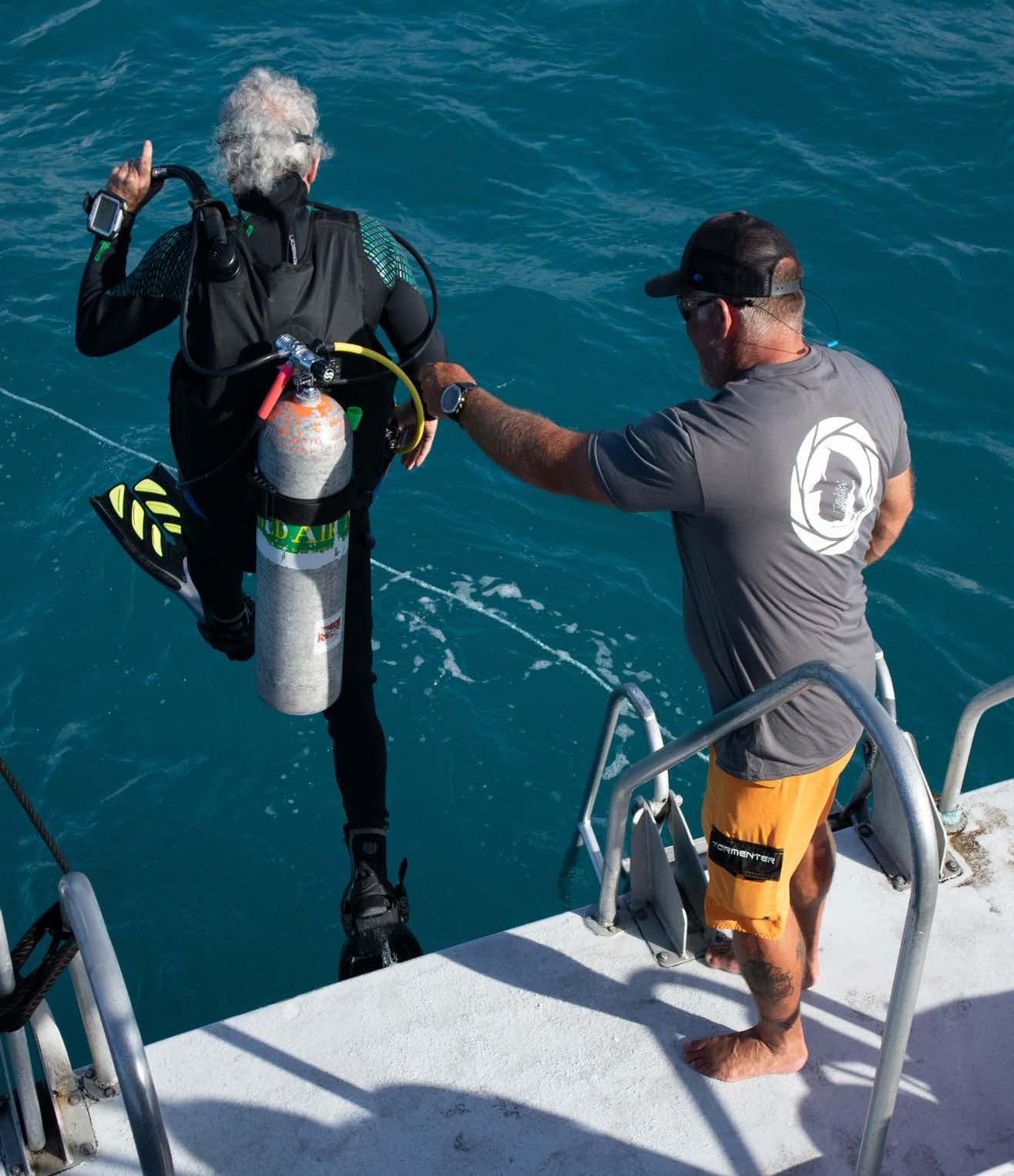

64 6 West Colony Place Durham NC 27705 USA CUSTOMER SERVICE
DAN EMERGENCY HOTLINE
CUSTOMER SERVICE +1-800-446-2671 CUSTOMER SERVICE OUTSIDE THE U.S. AND CANADA +1-919-684-2948 WEBSITE DAN.org EMAIL member@dan.org EXPLORE WITH DAN Divers Alert Network @diversalertnetwork @DANGlobalSafety DiversAlertNetworkTV NUFIC-SM-12299-2022GSG
+1-919-684-2948
+1-919-684-9111


















































































